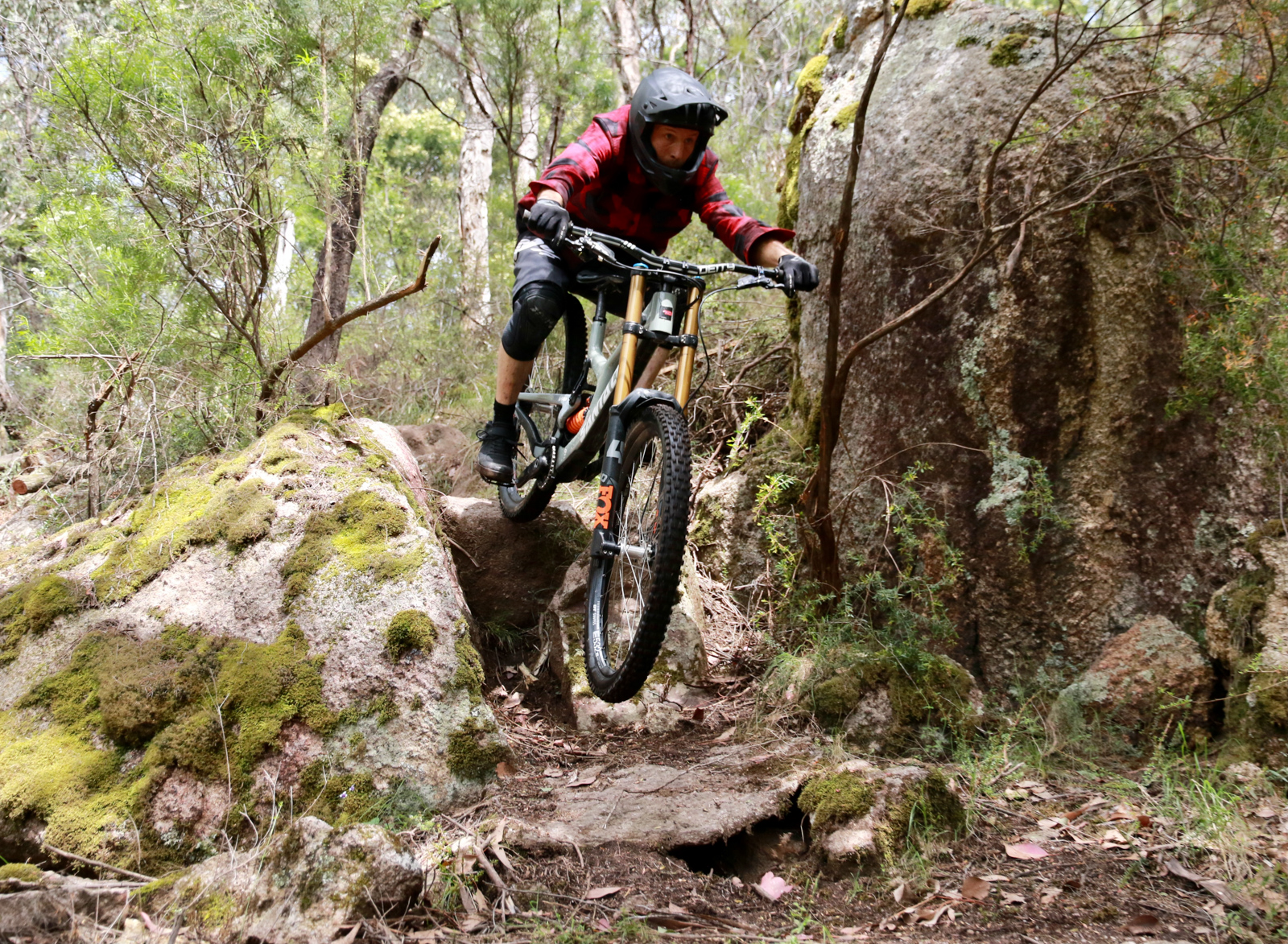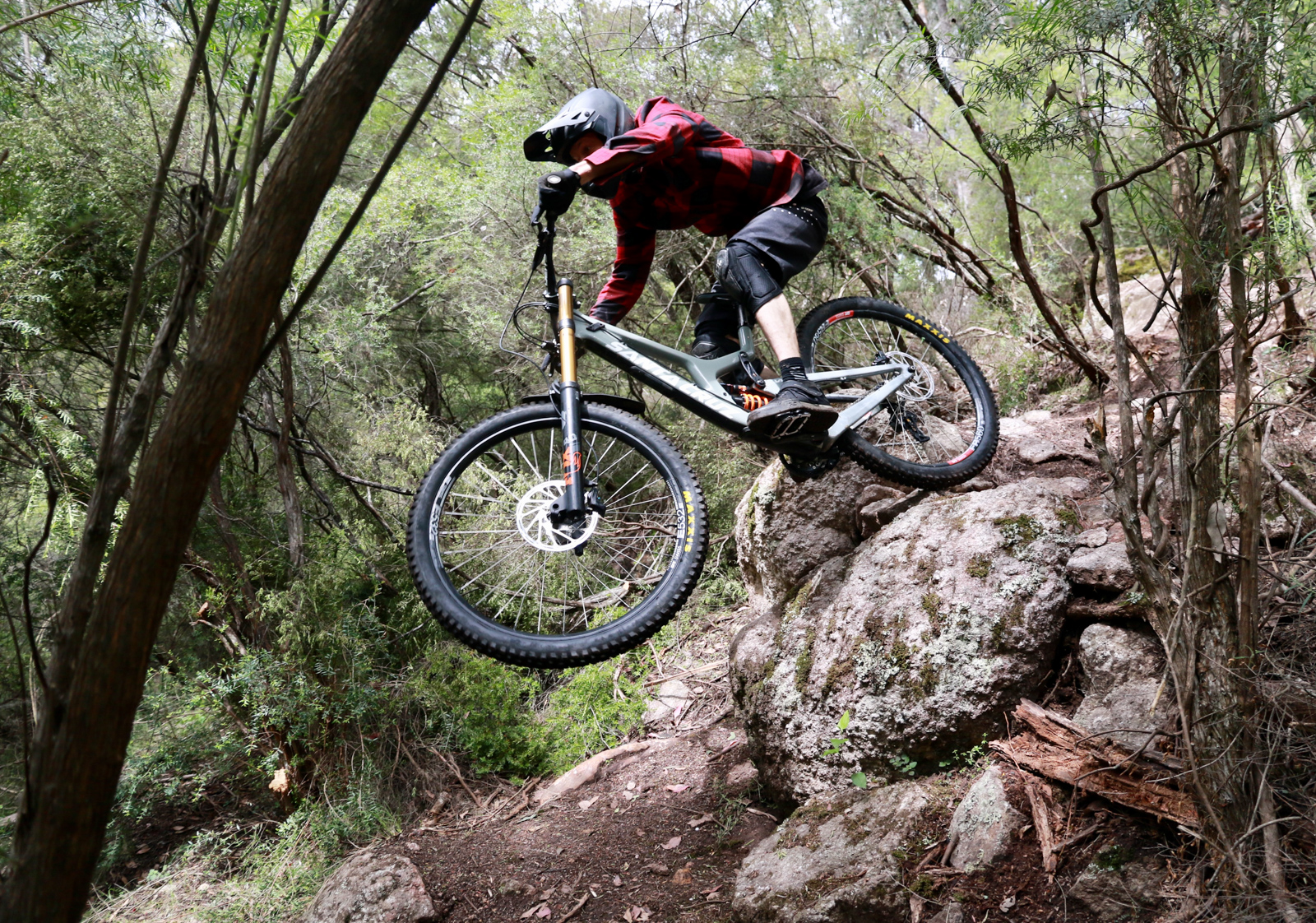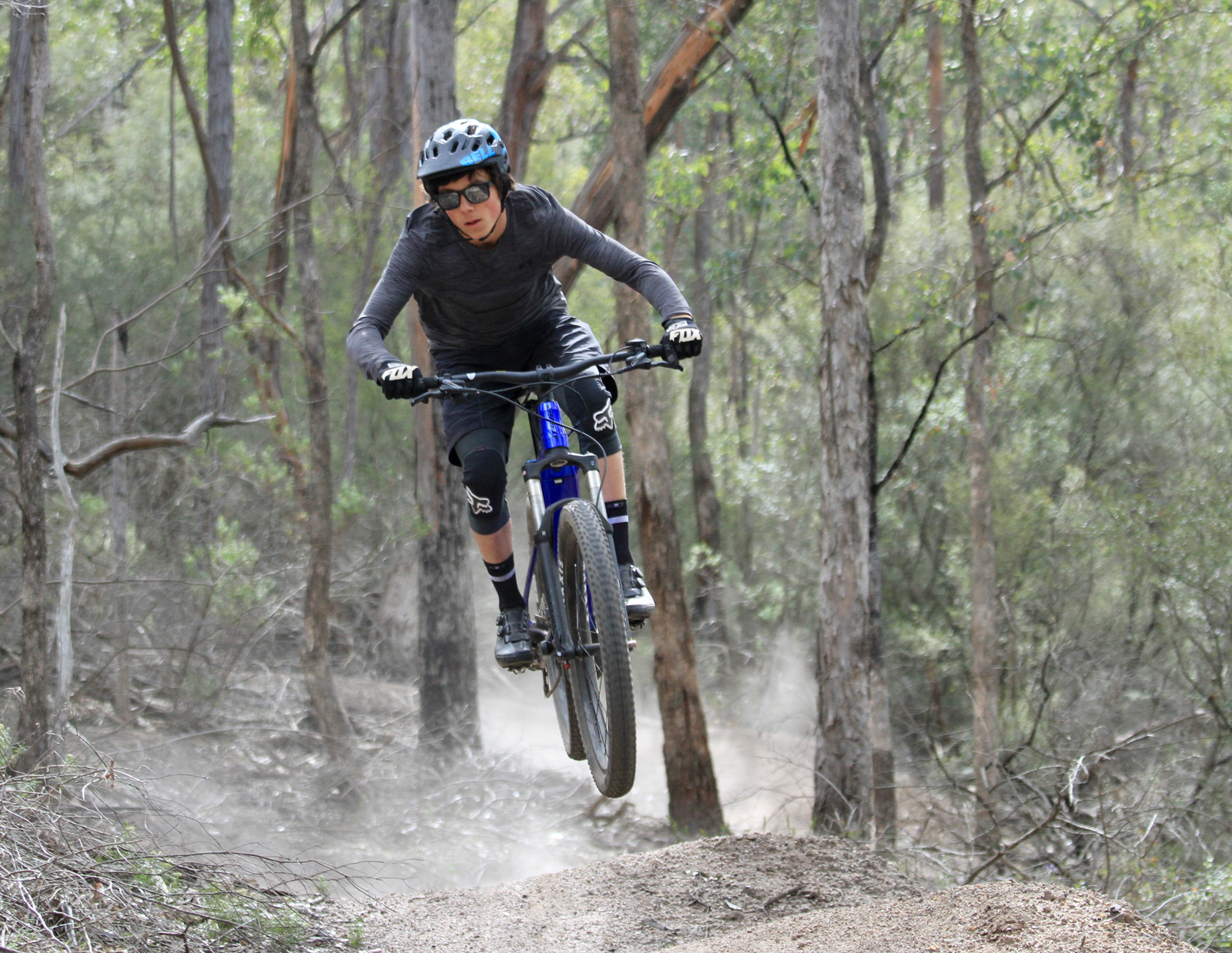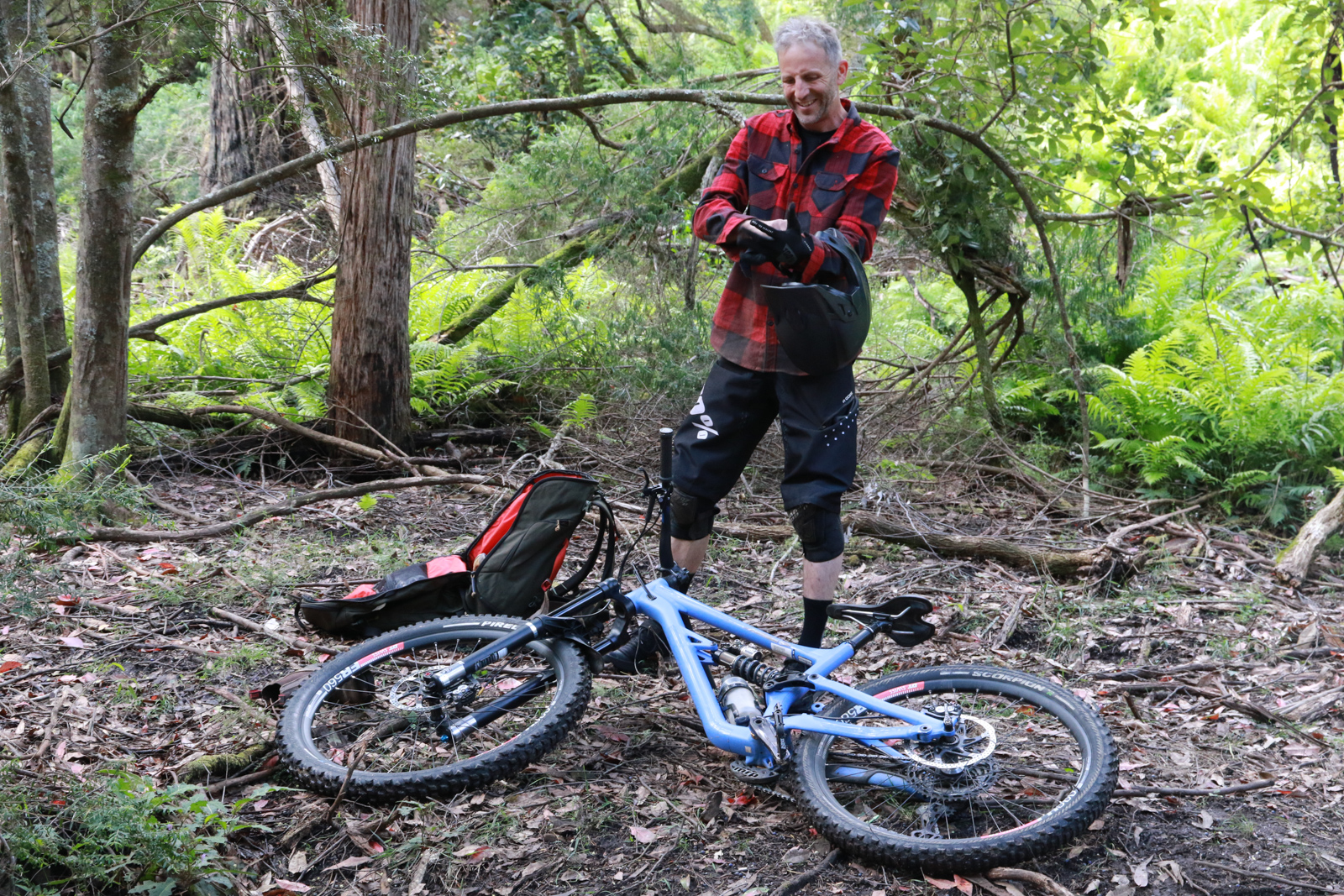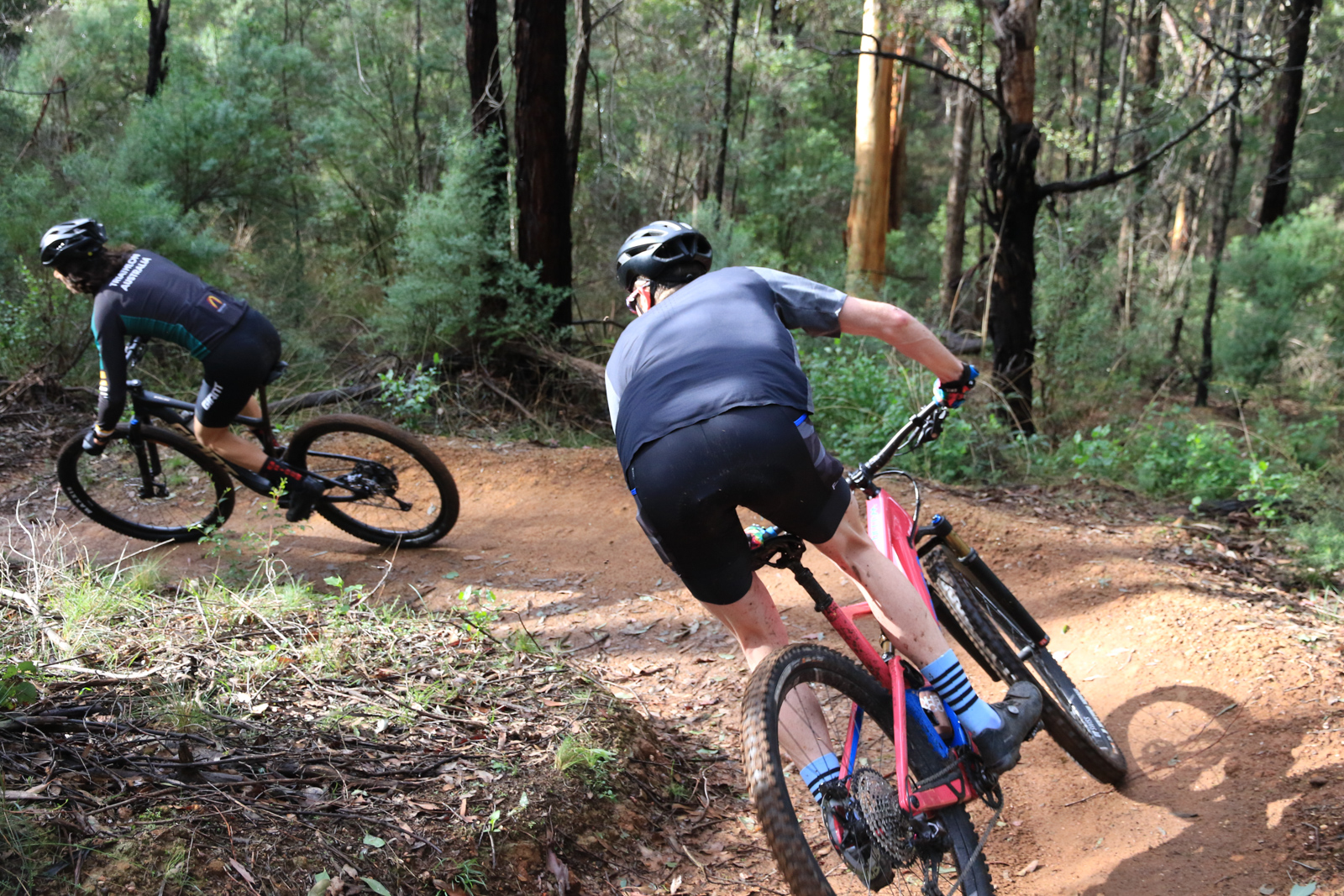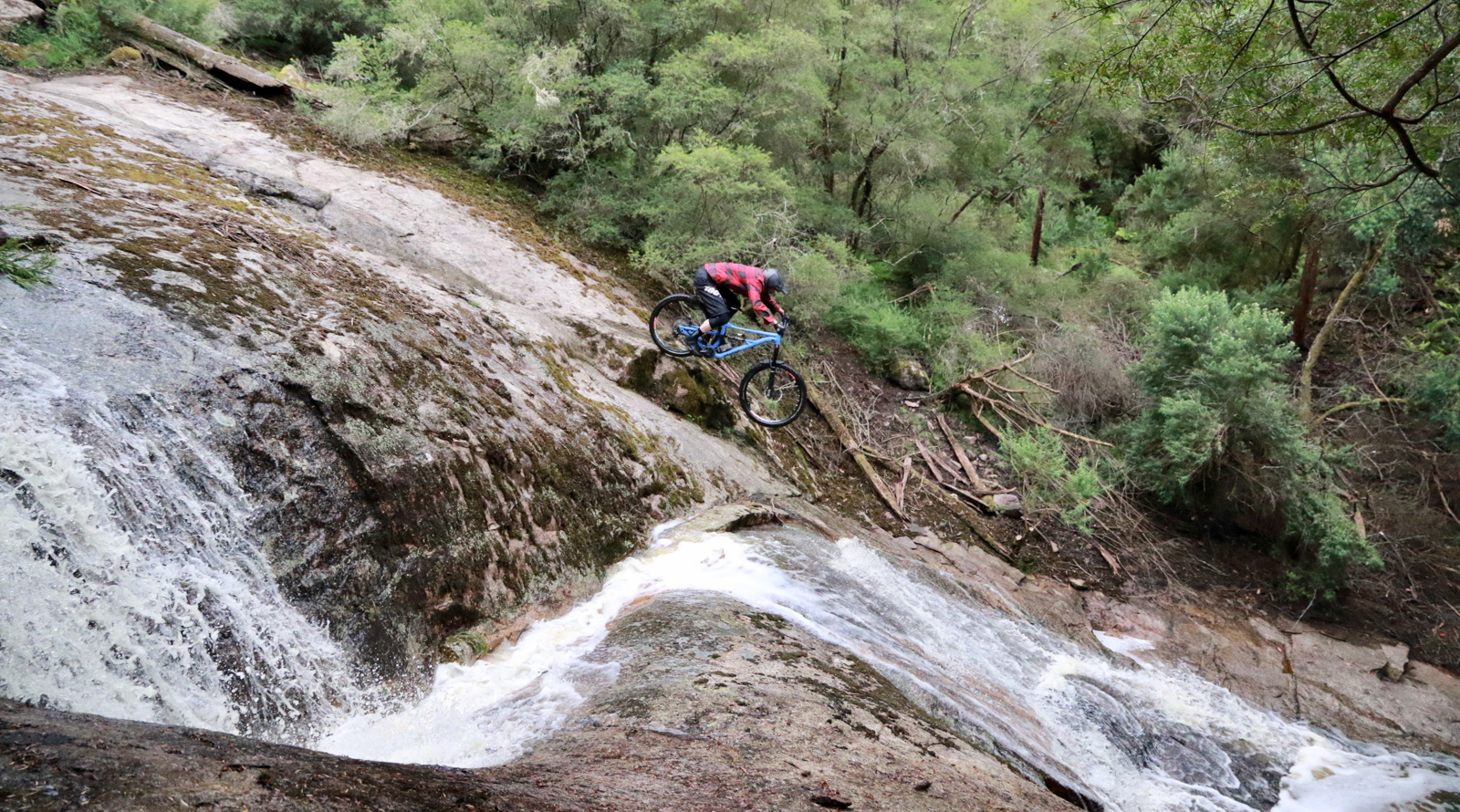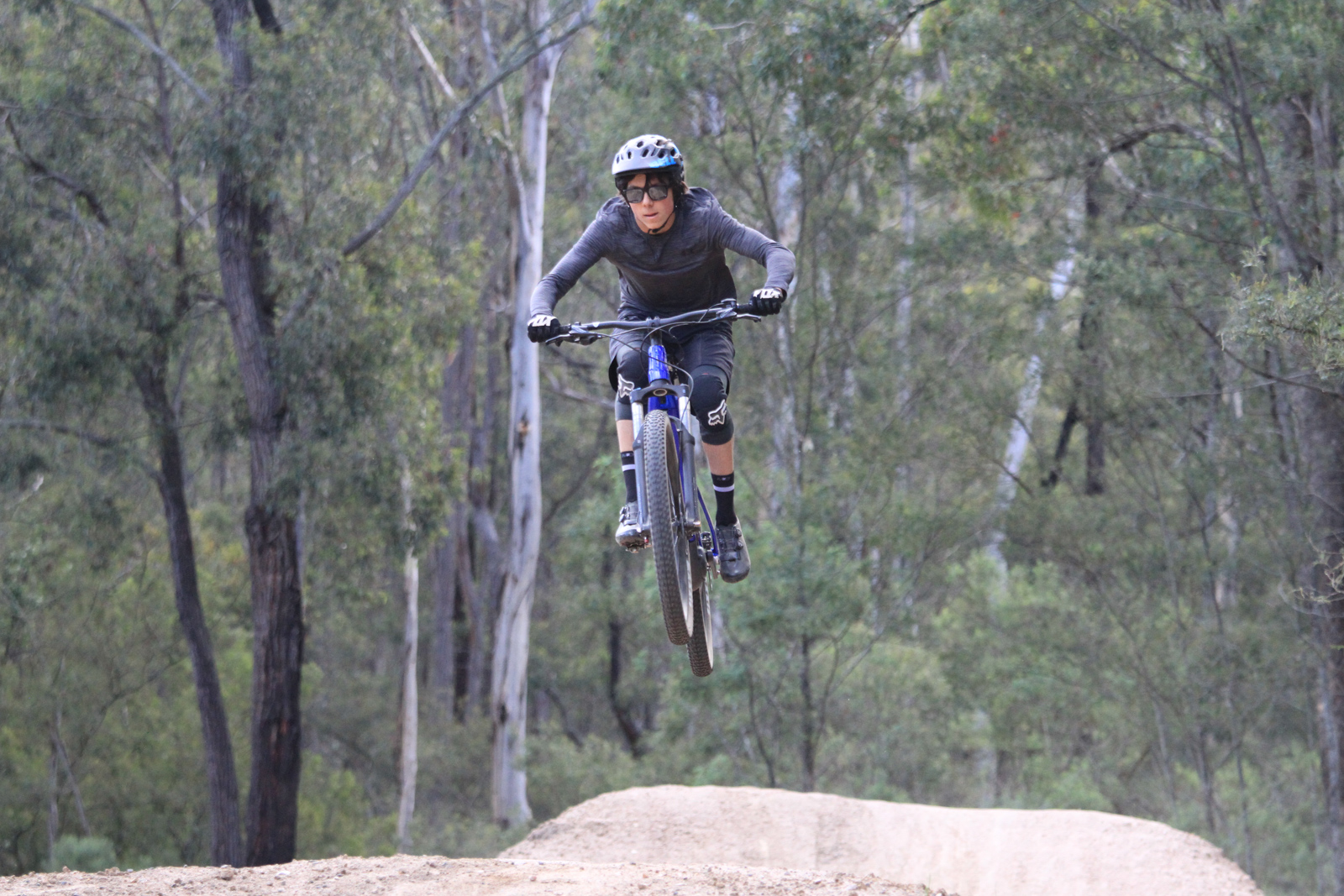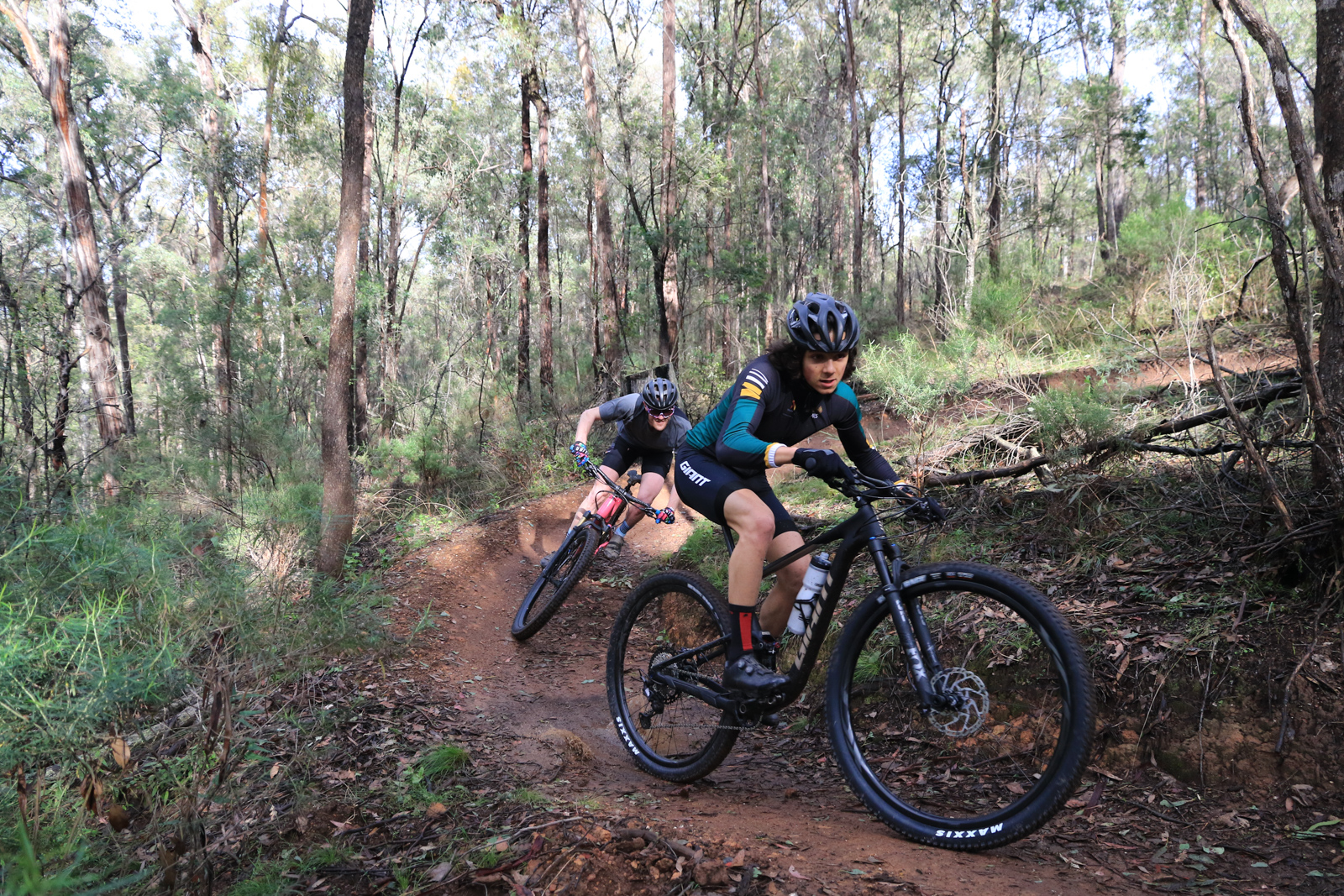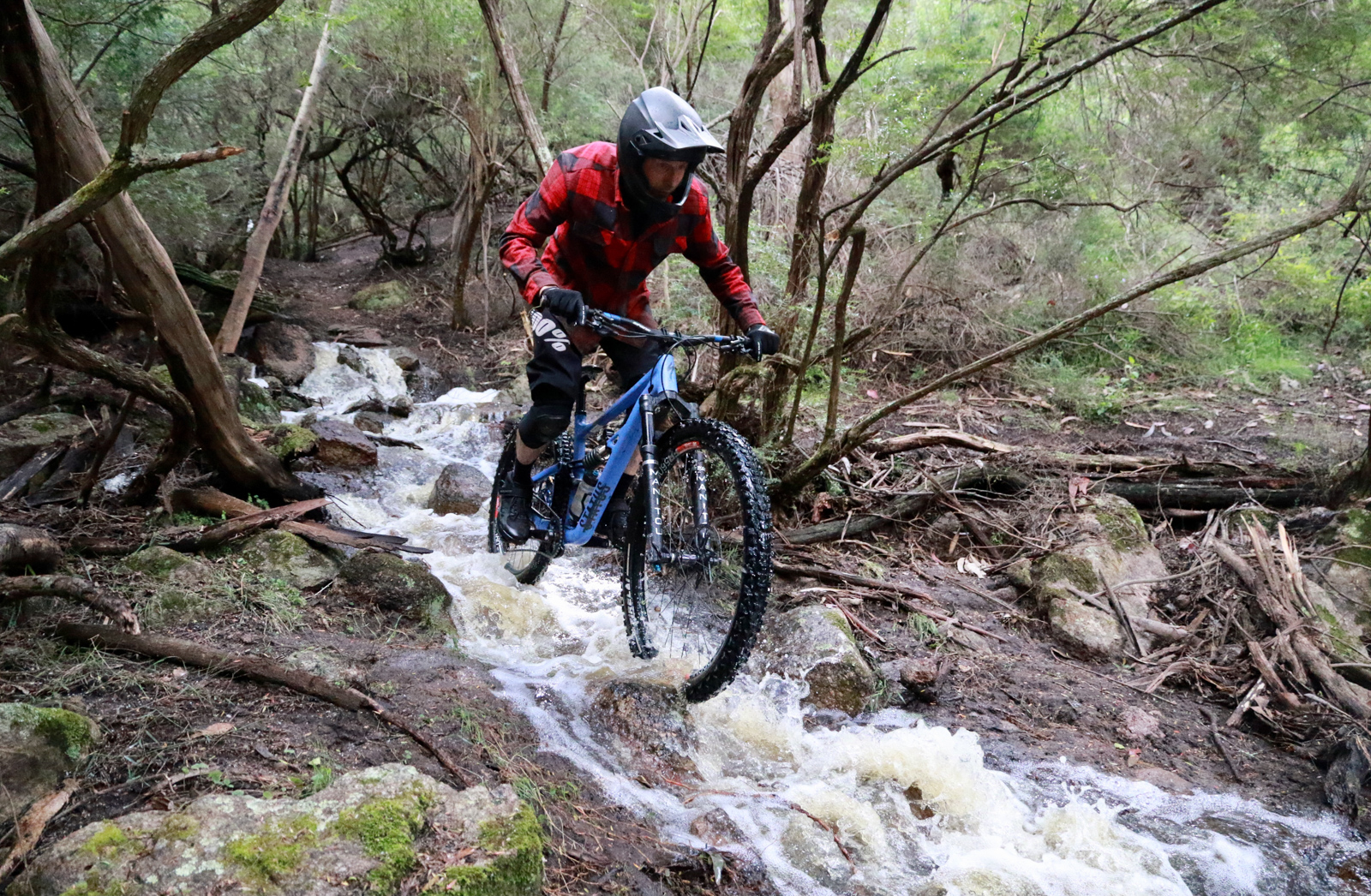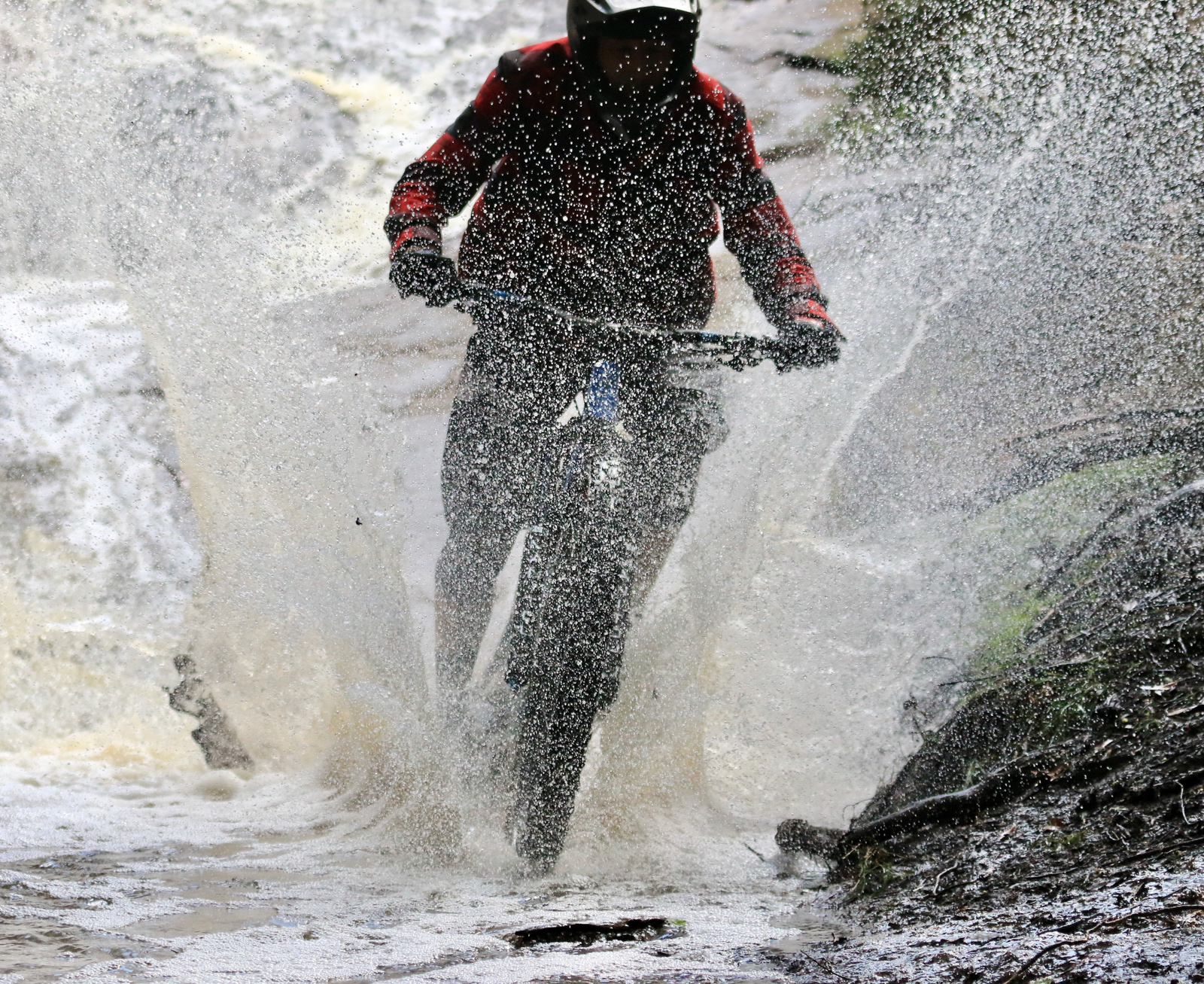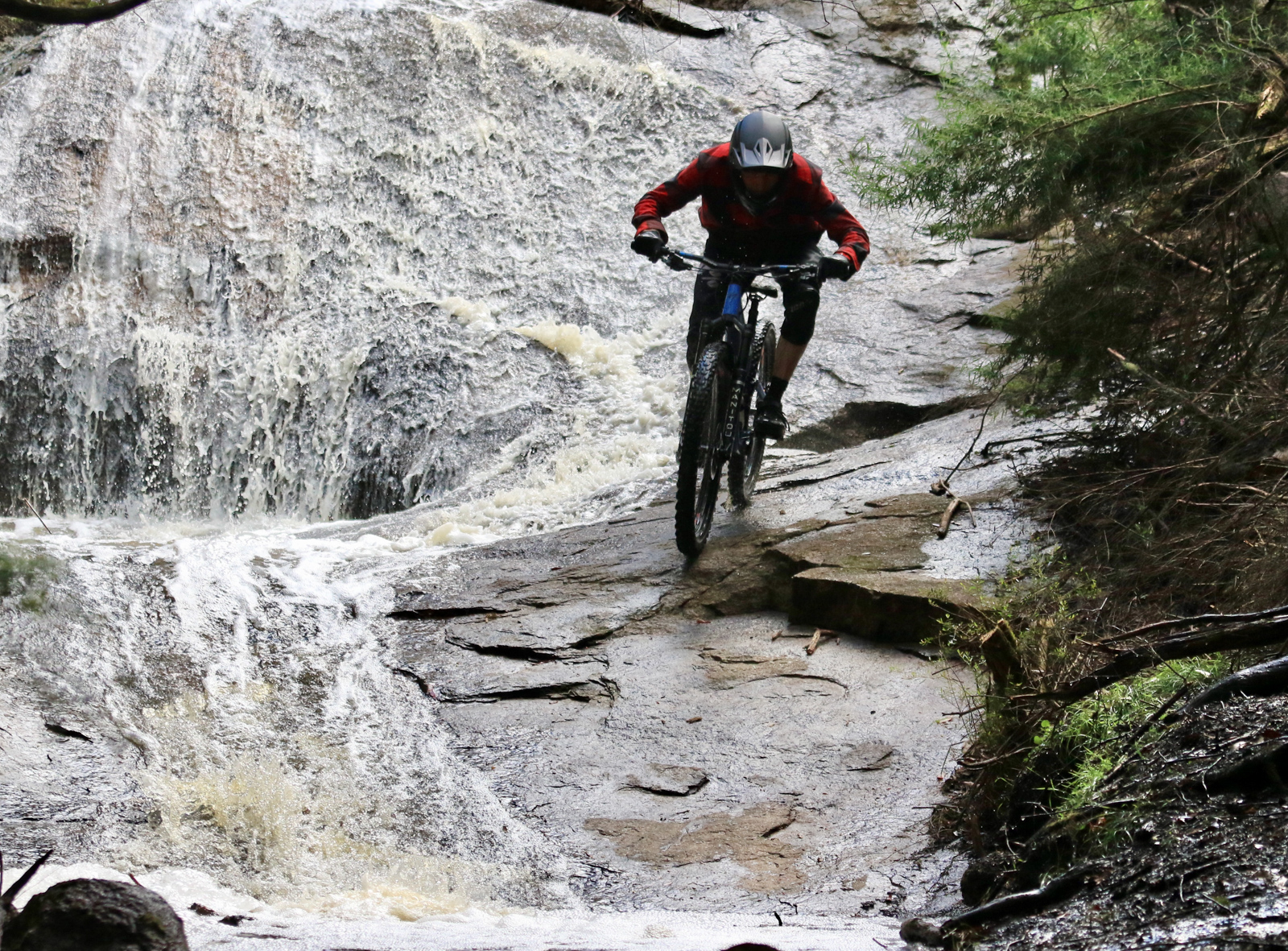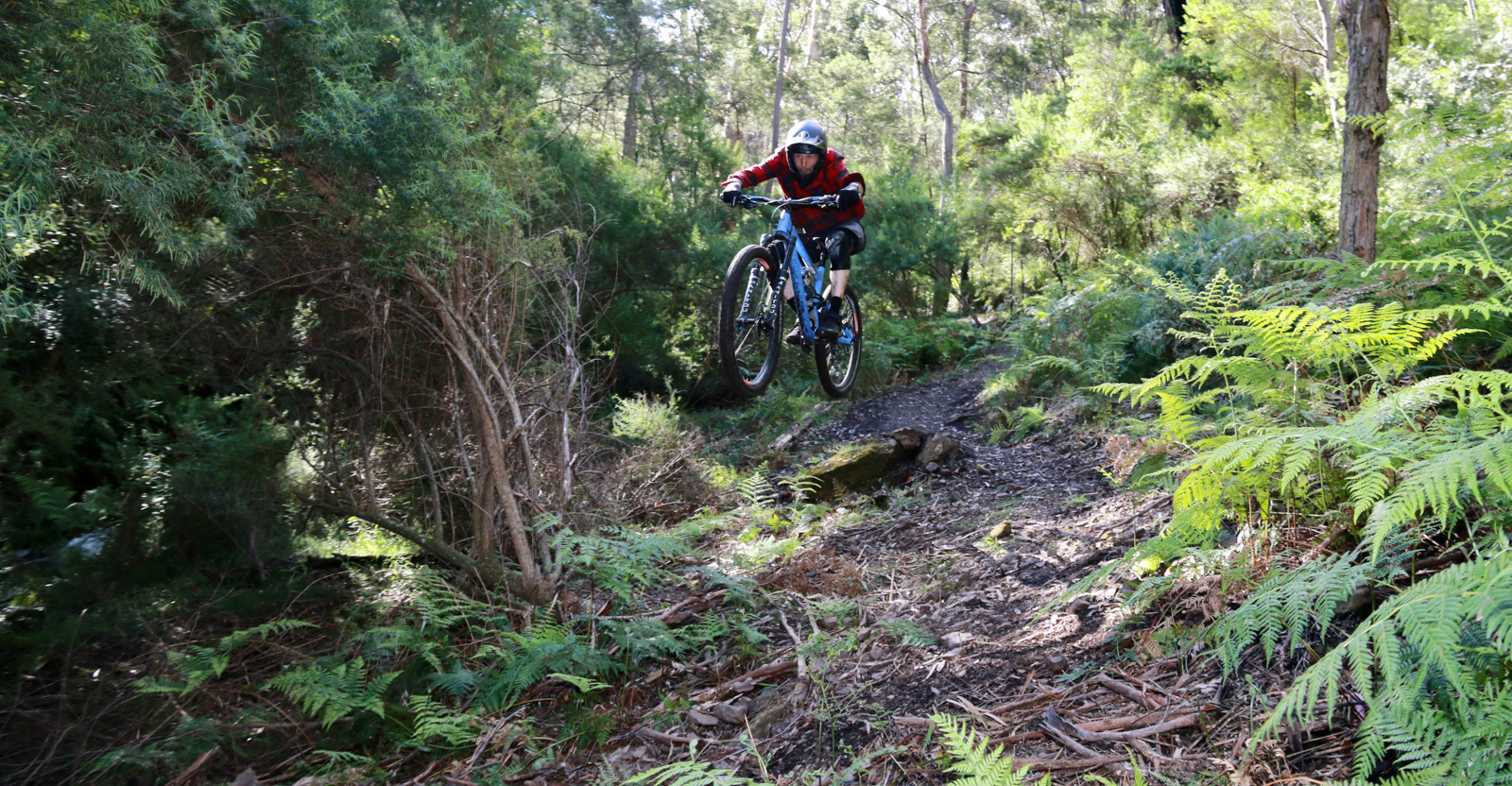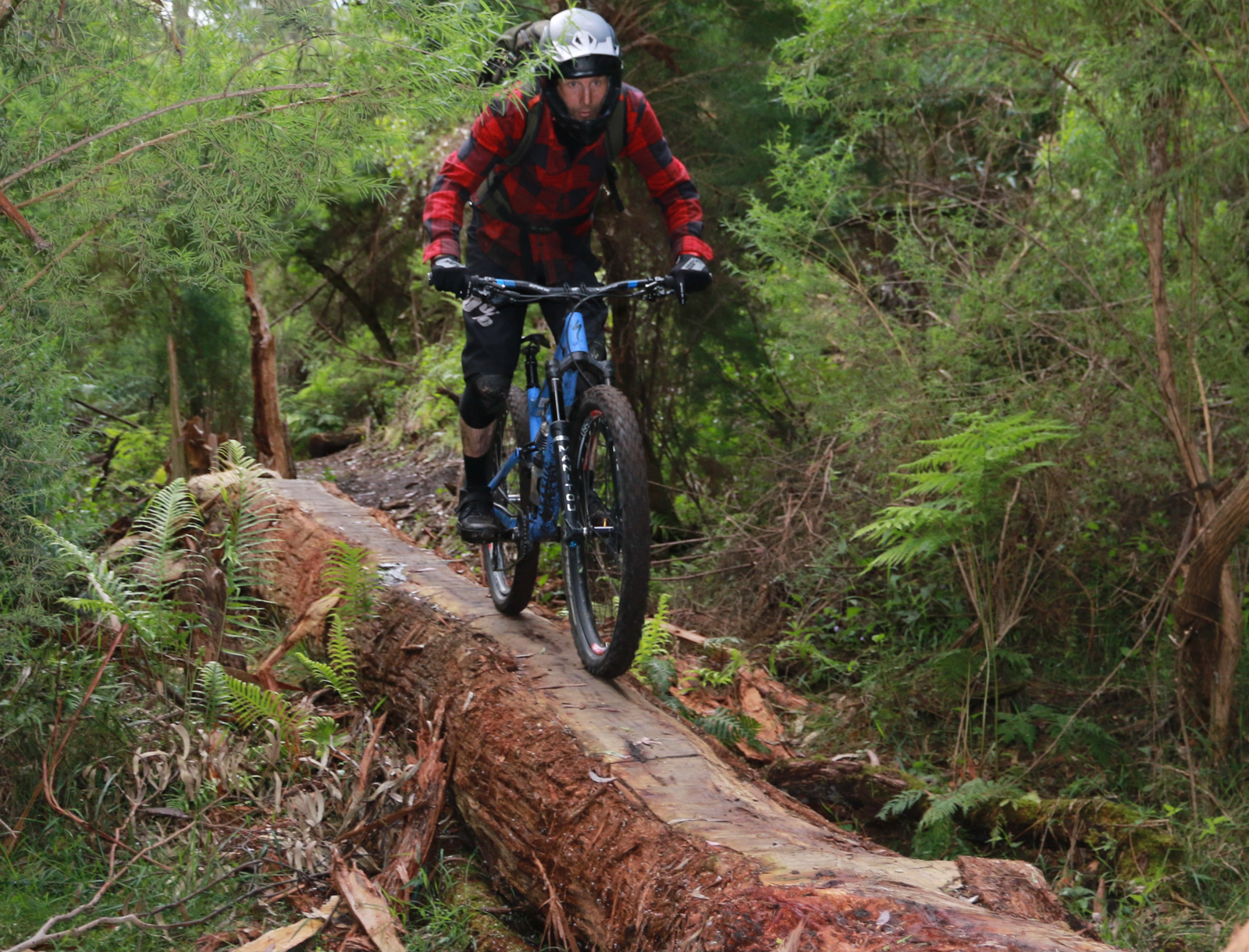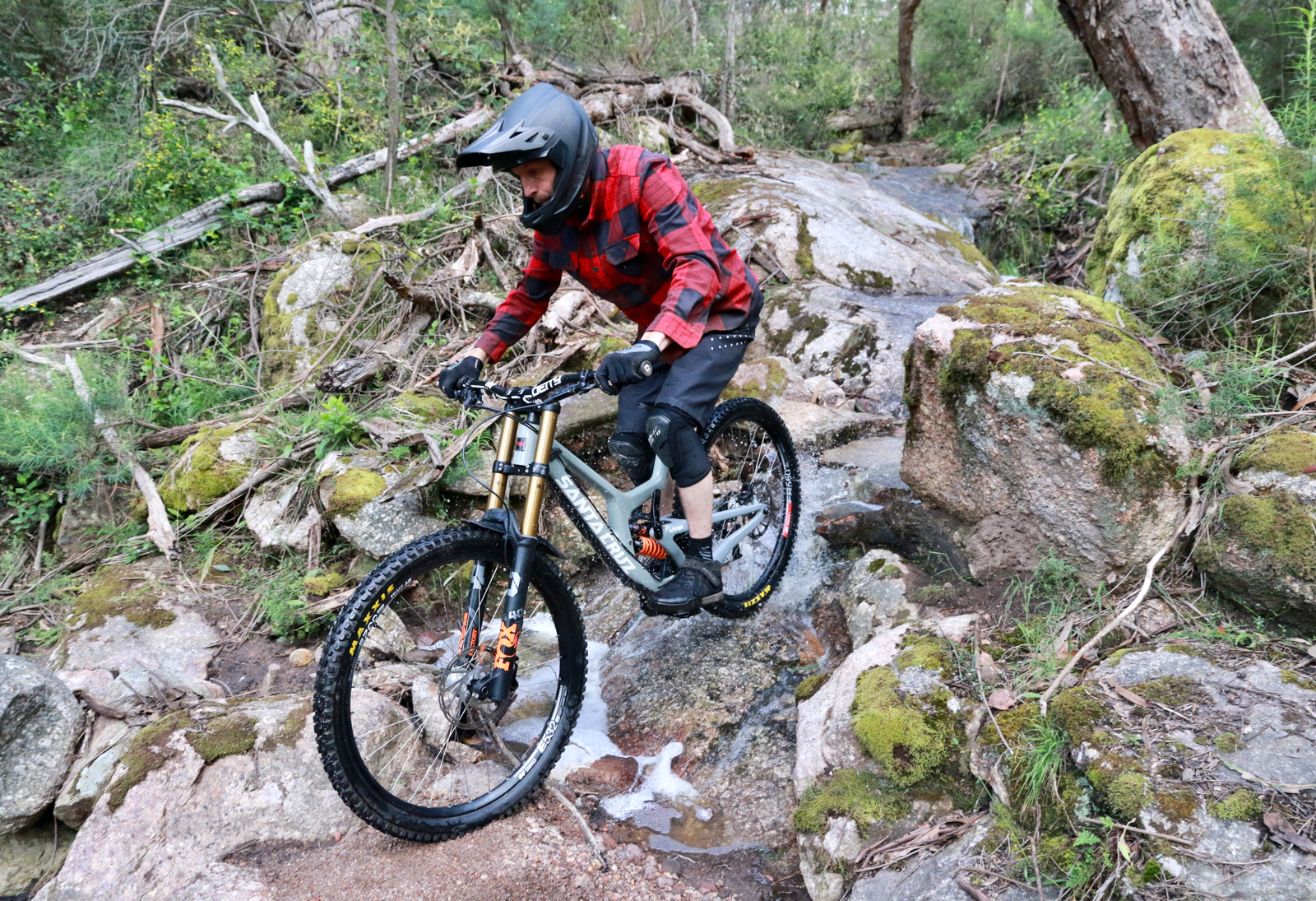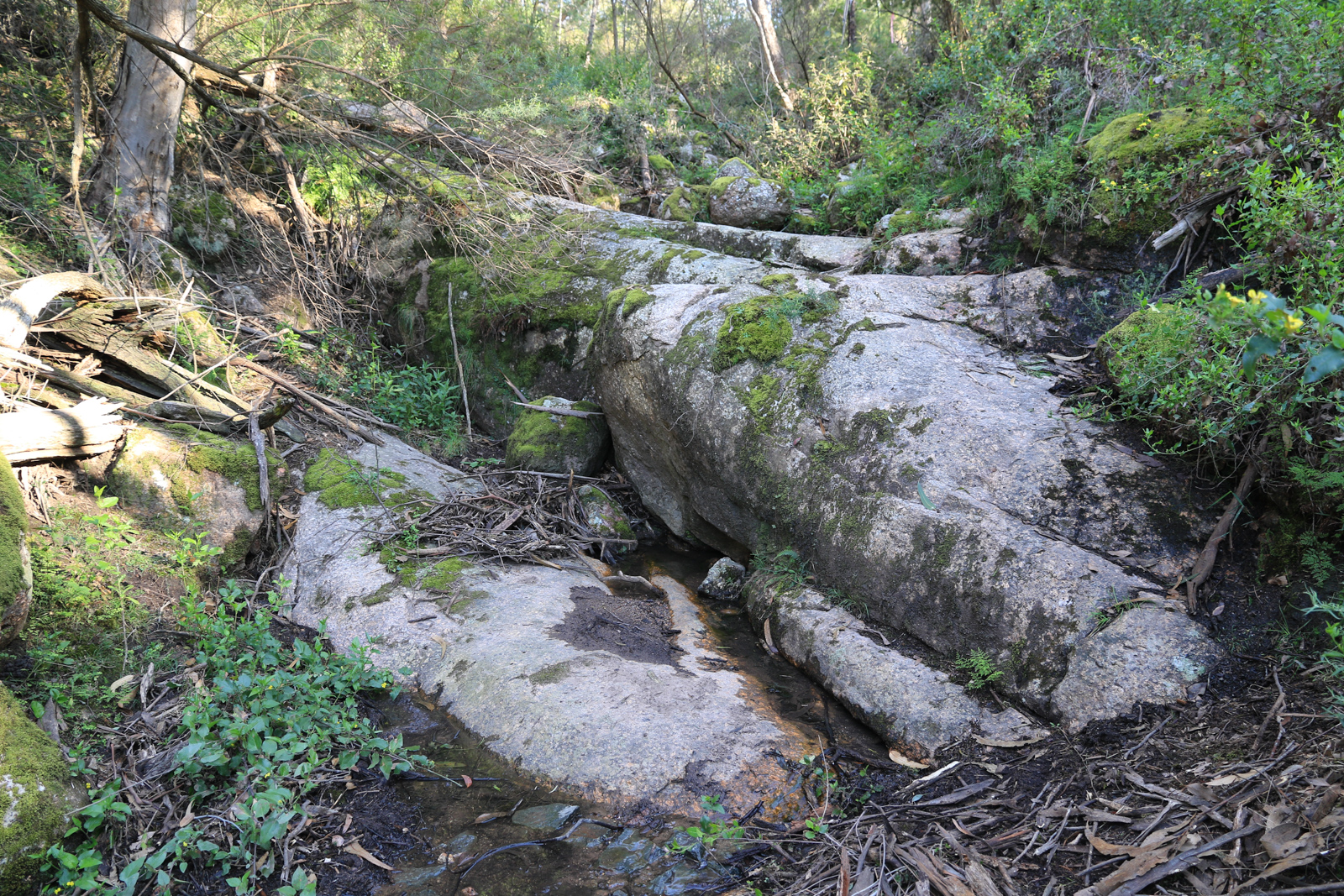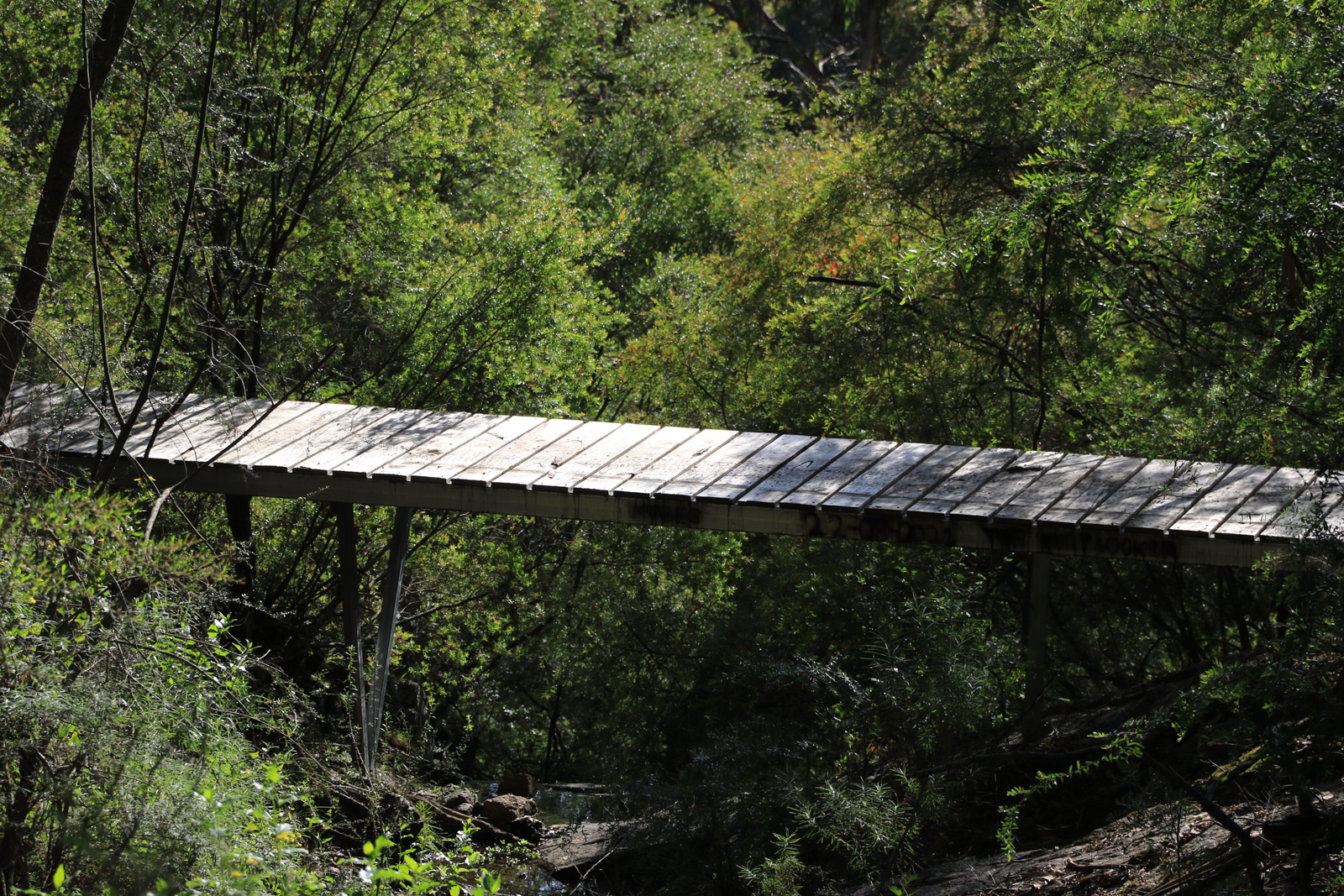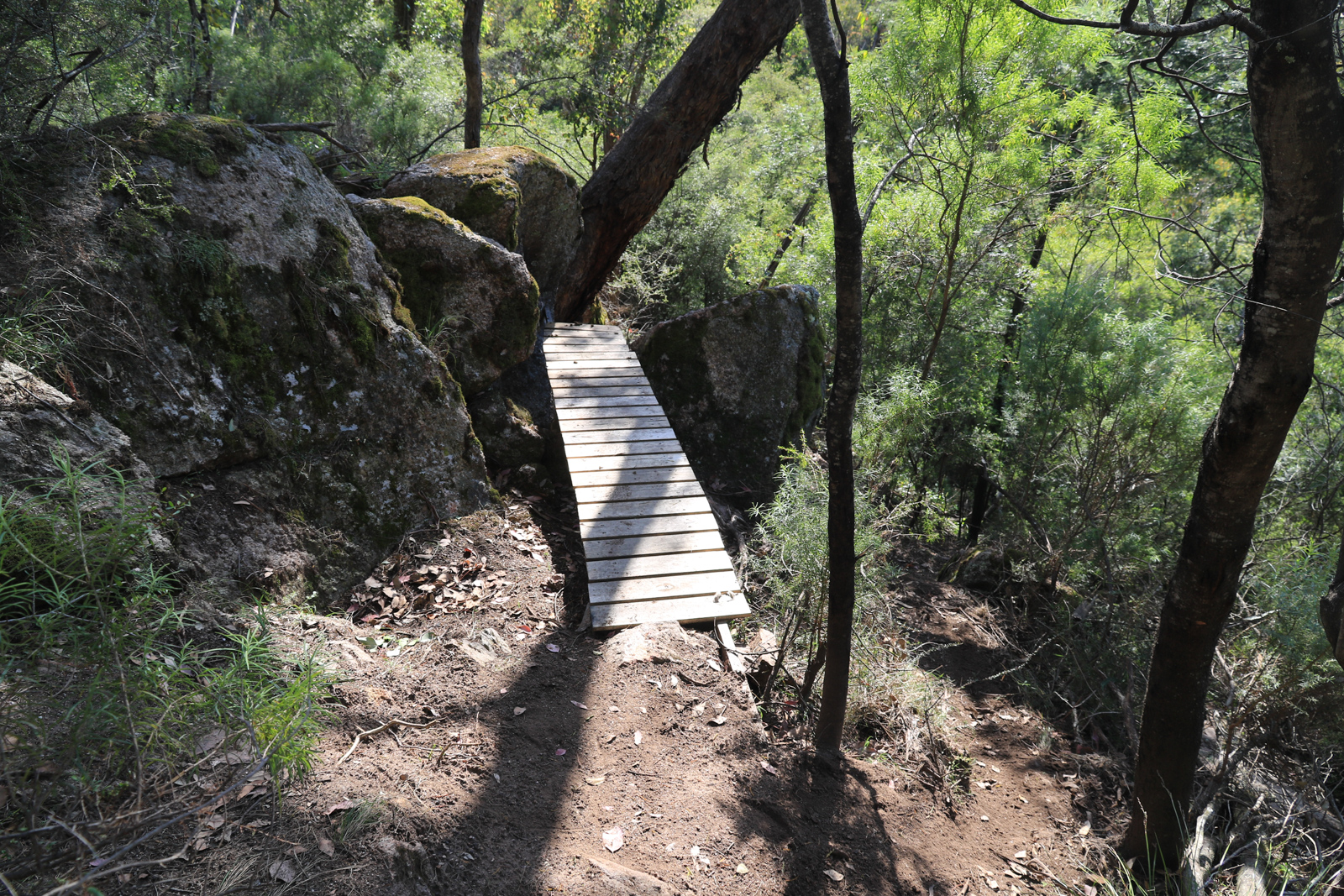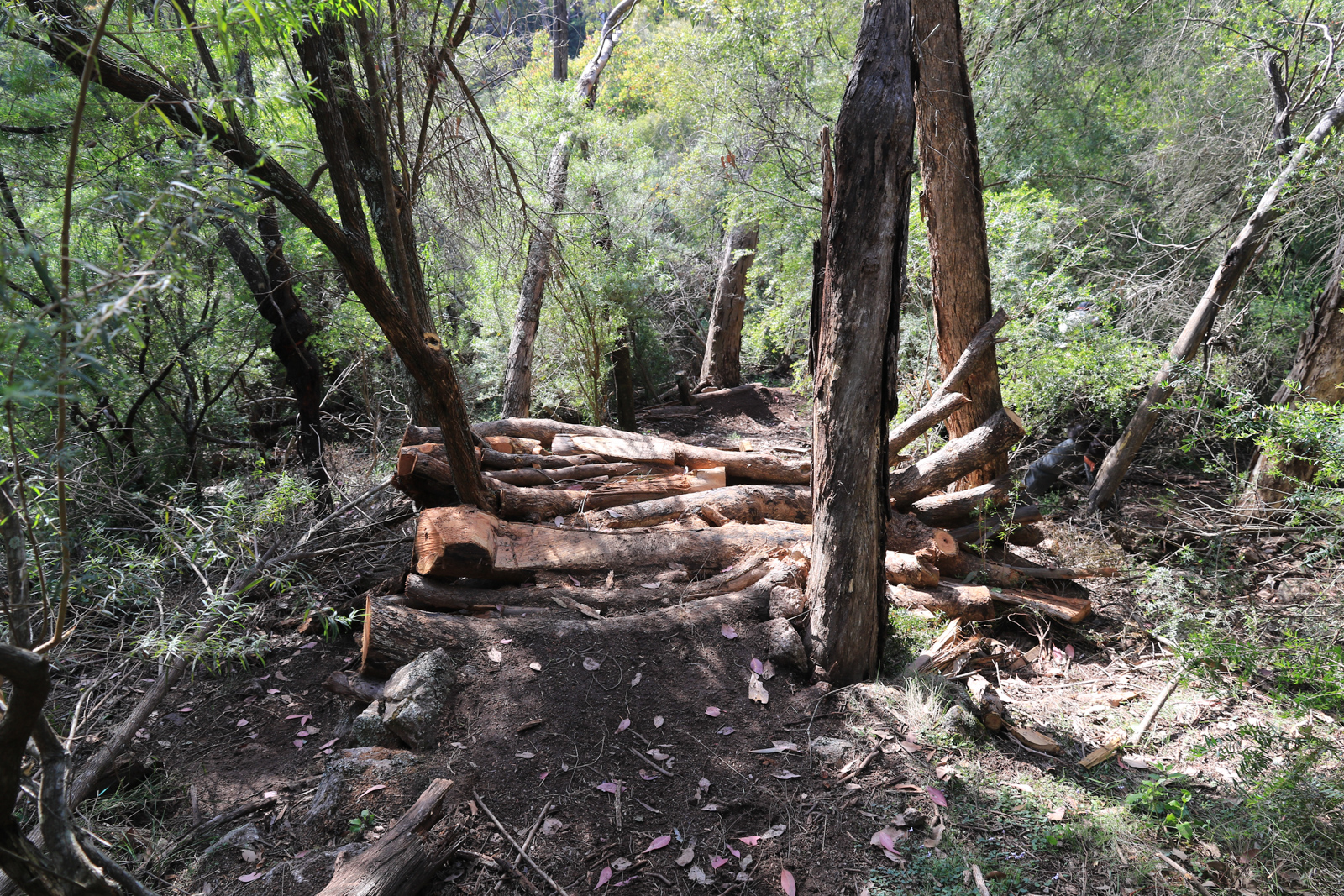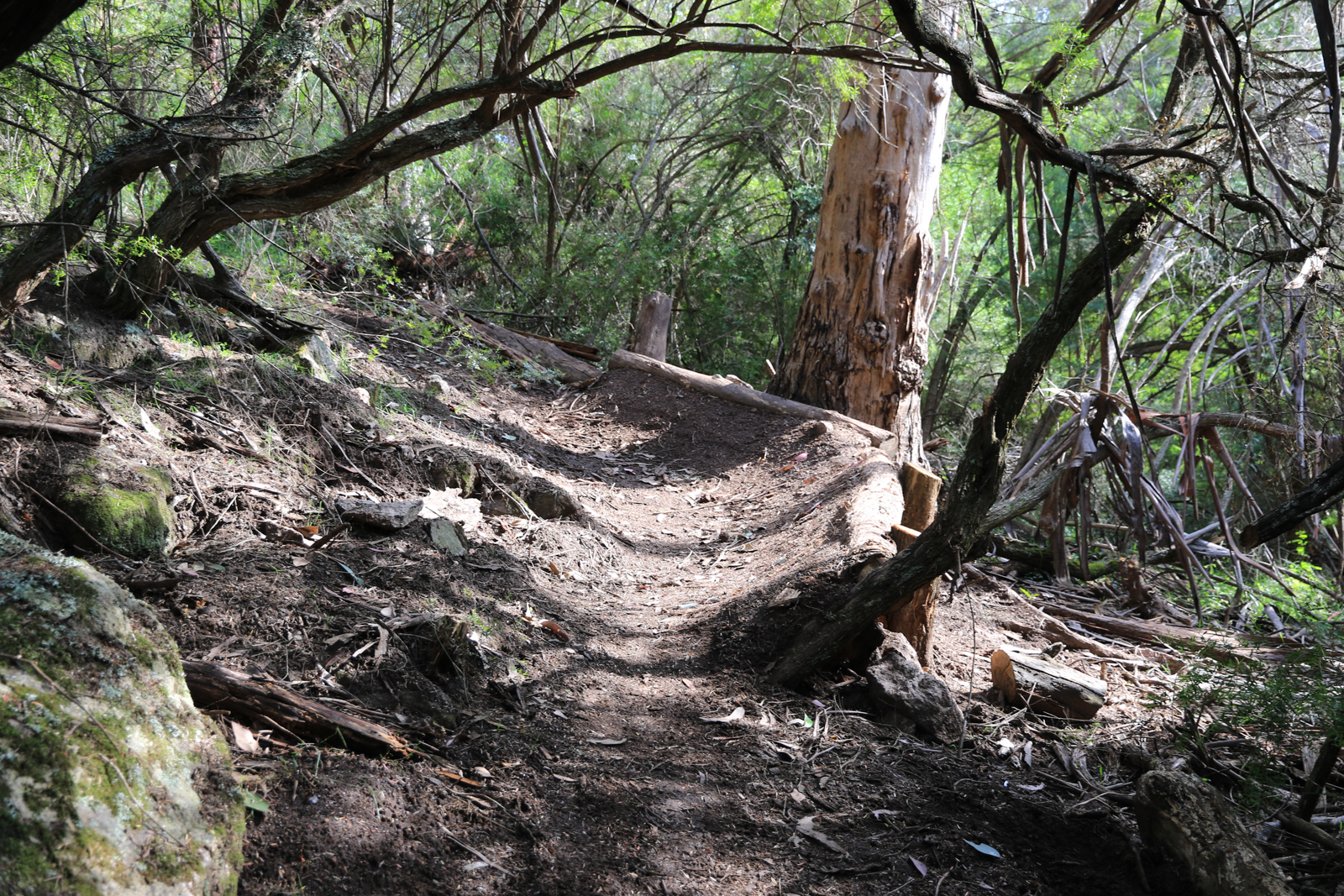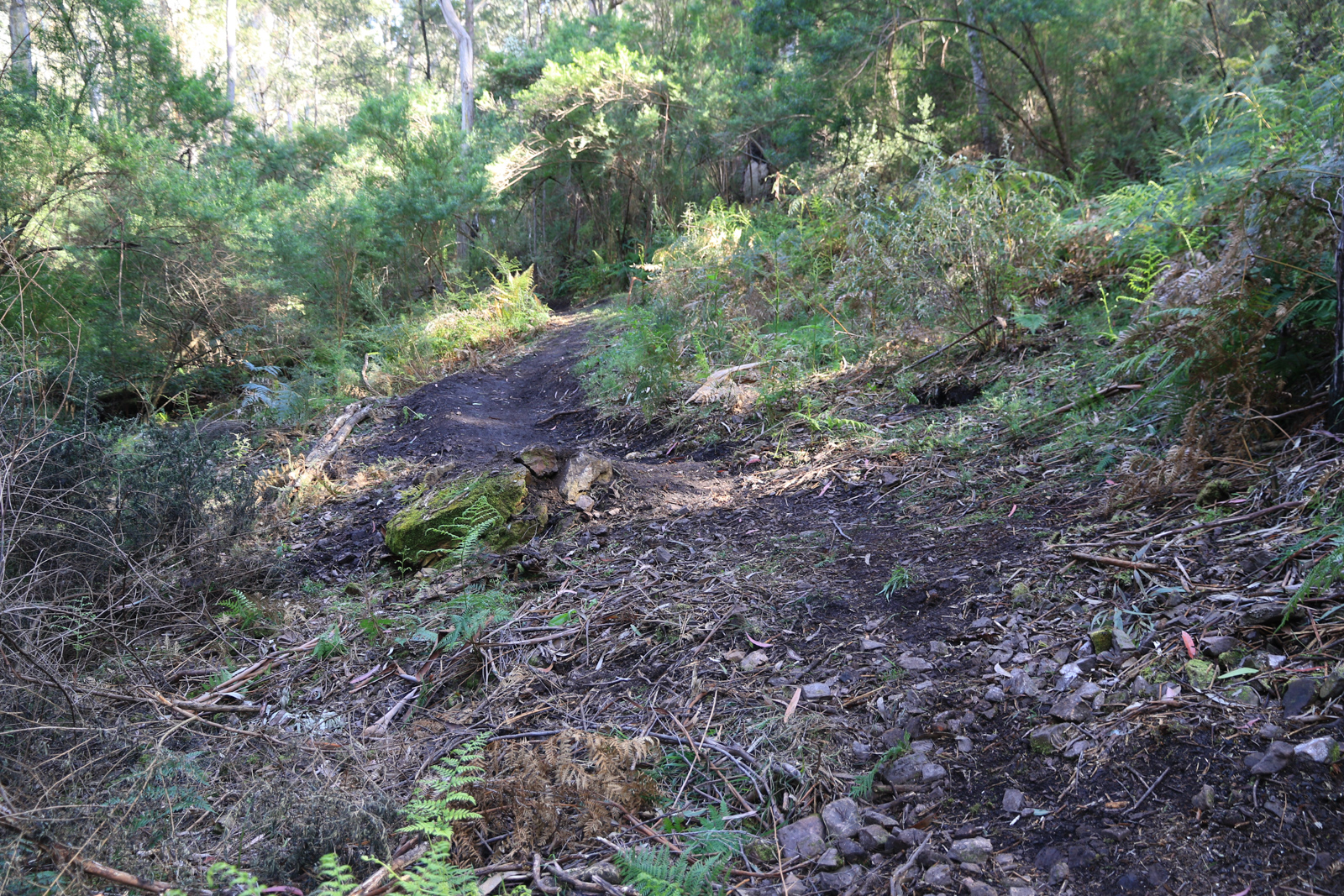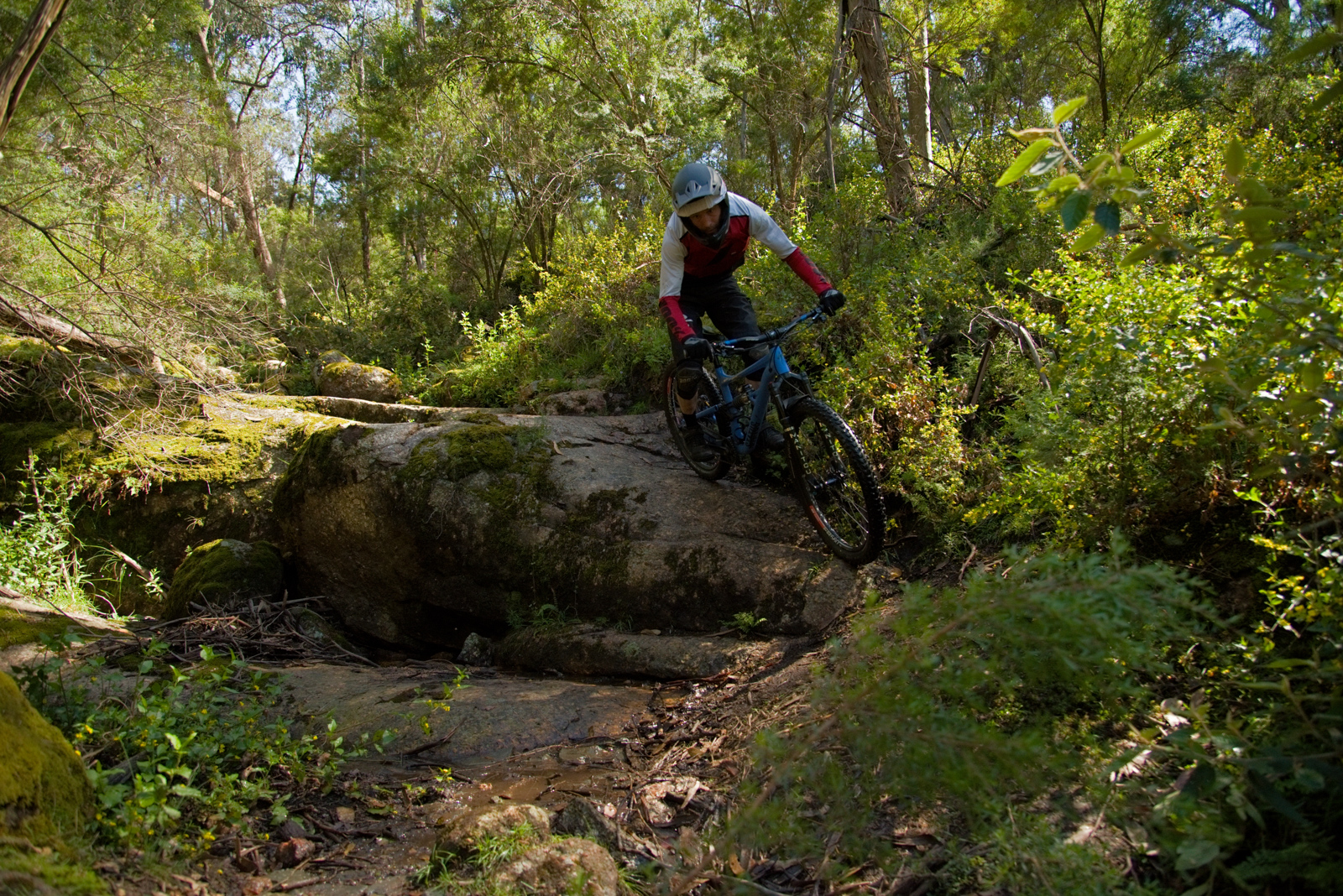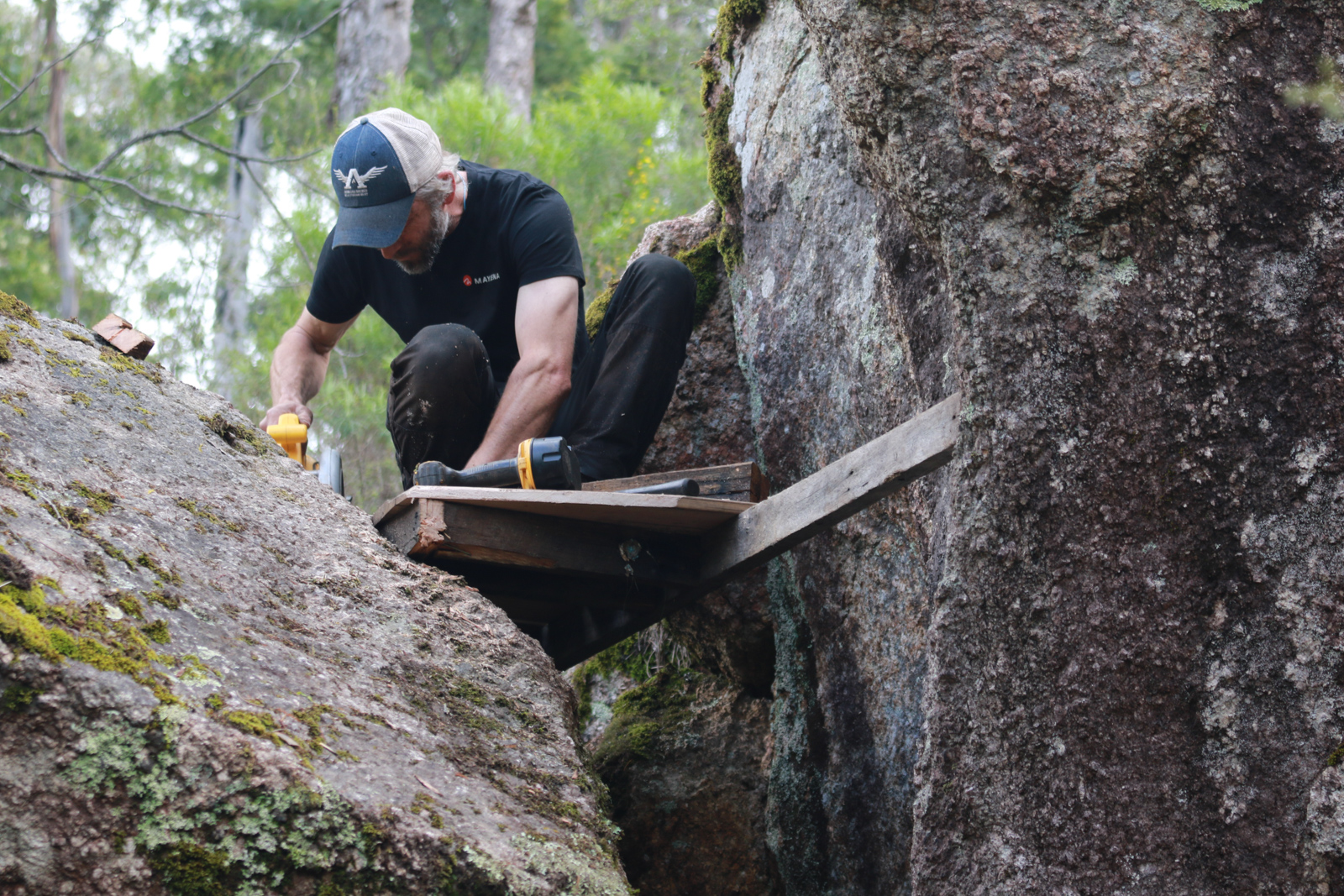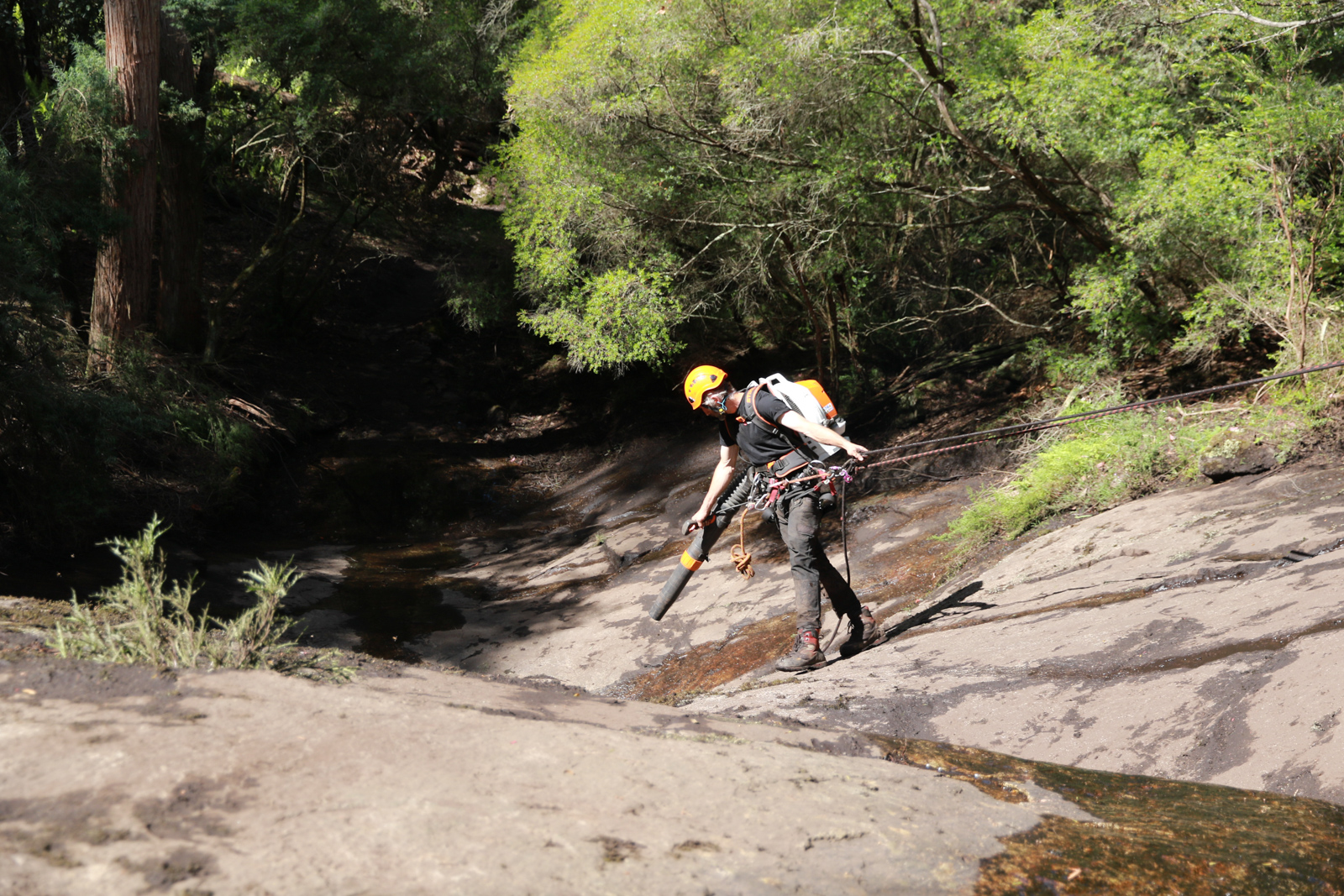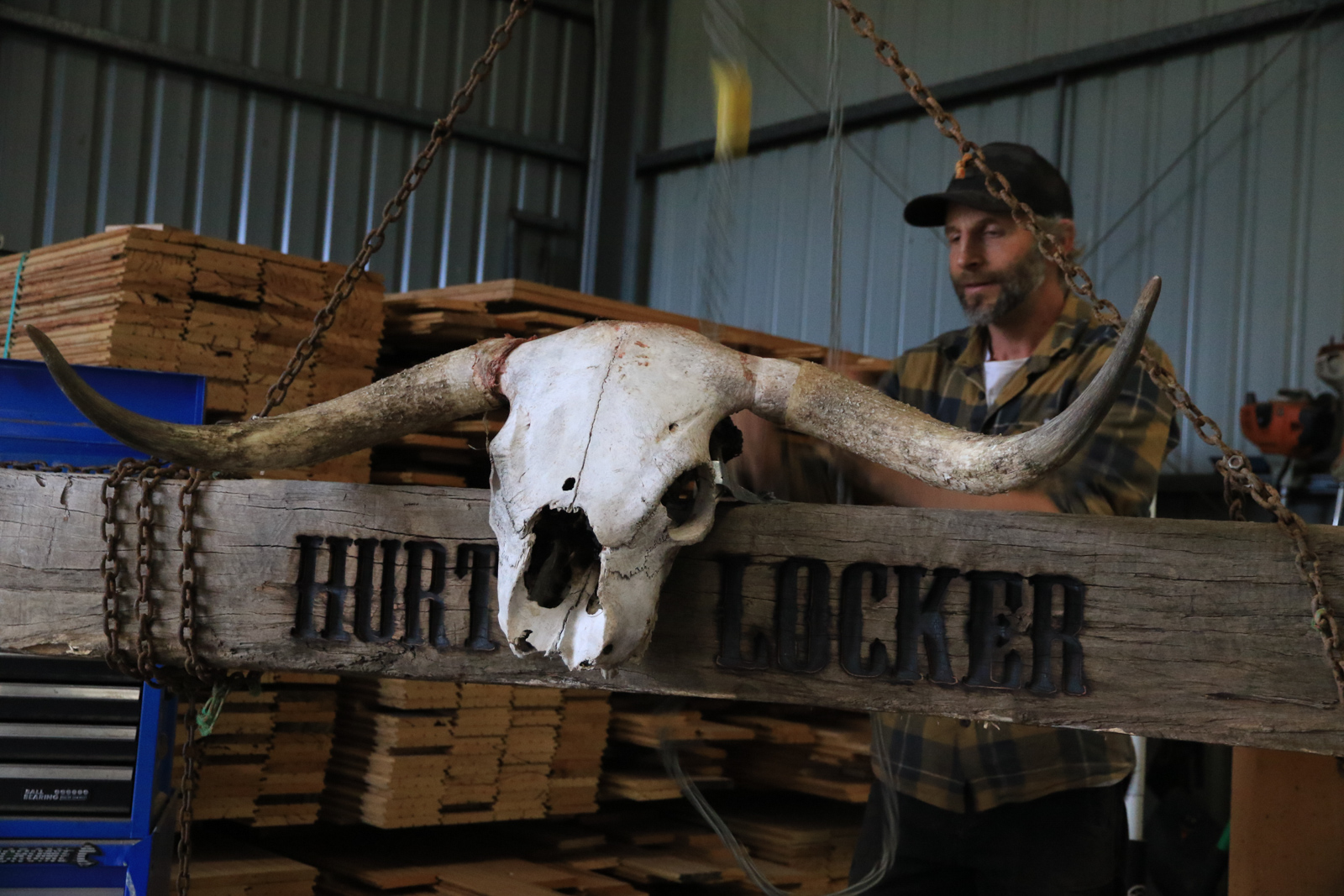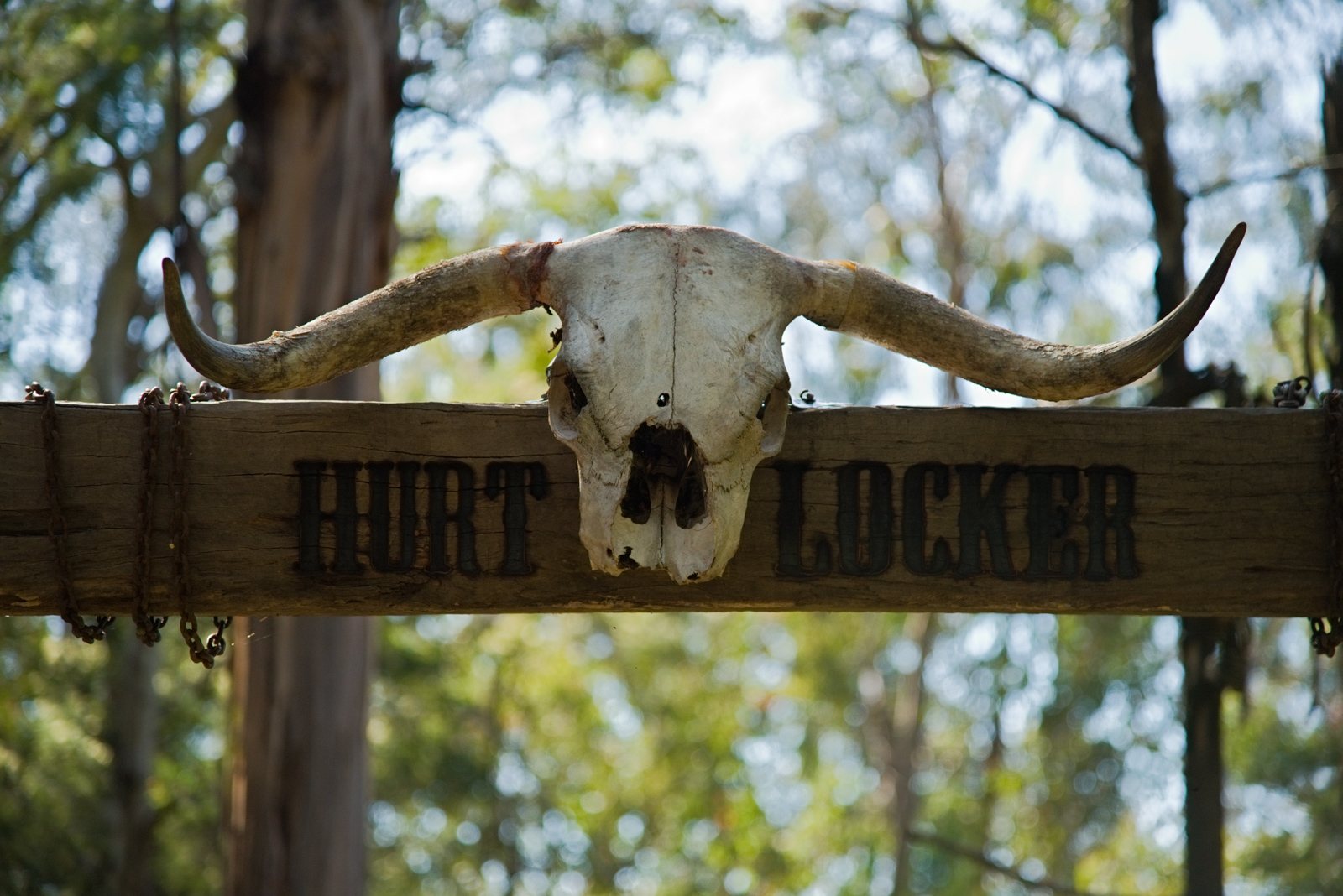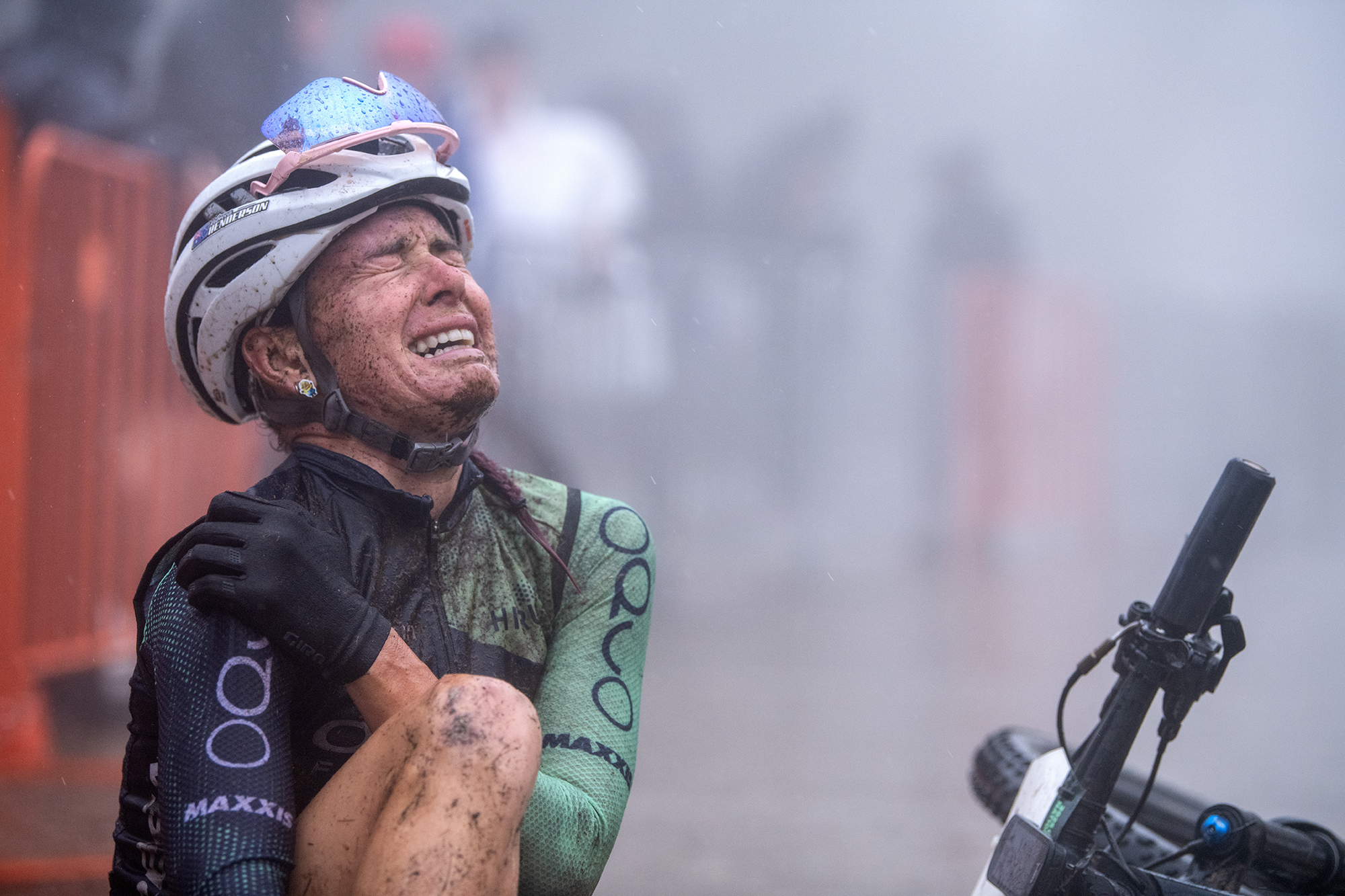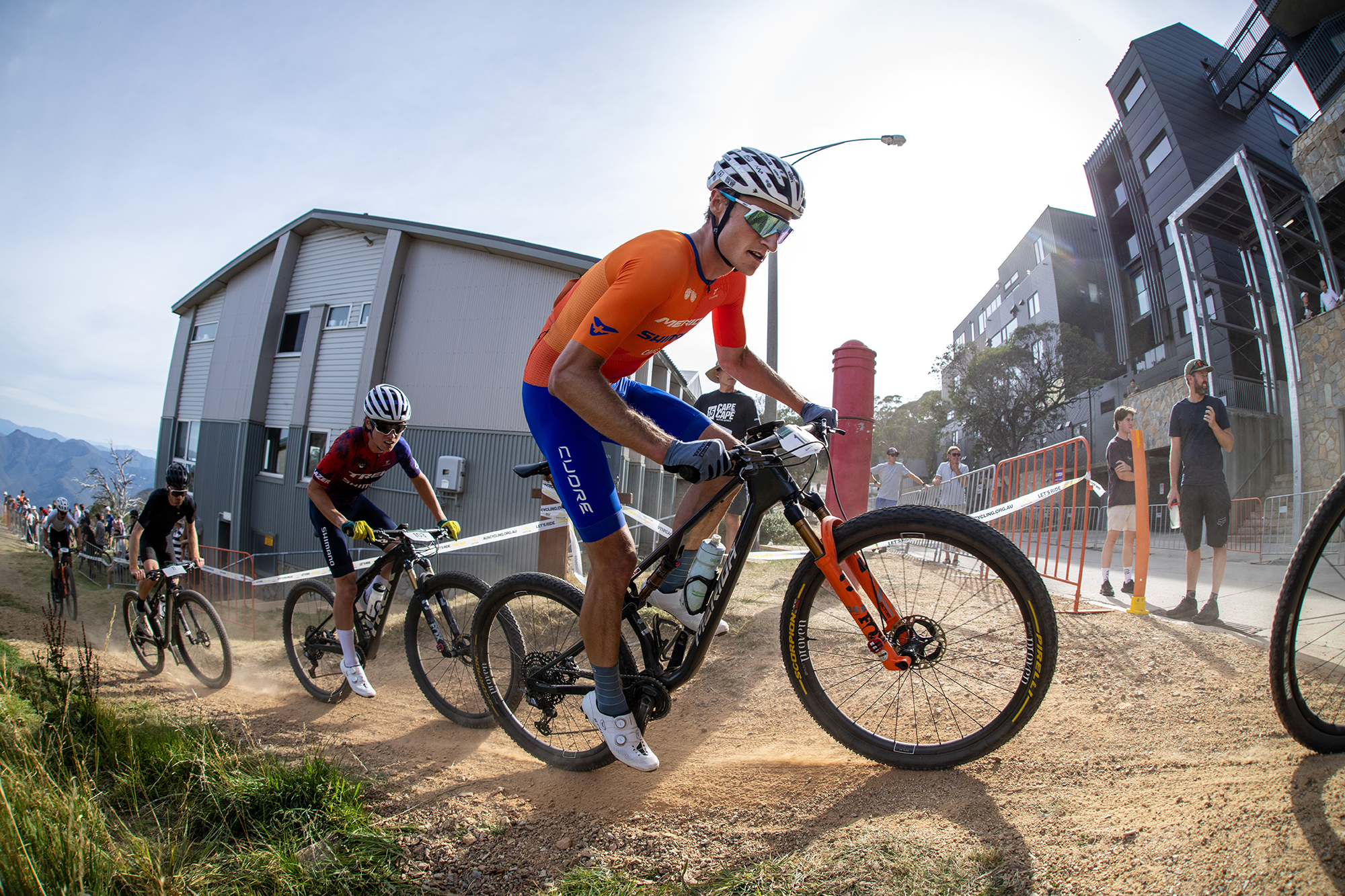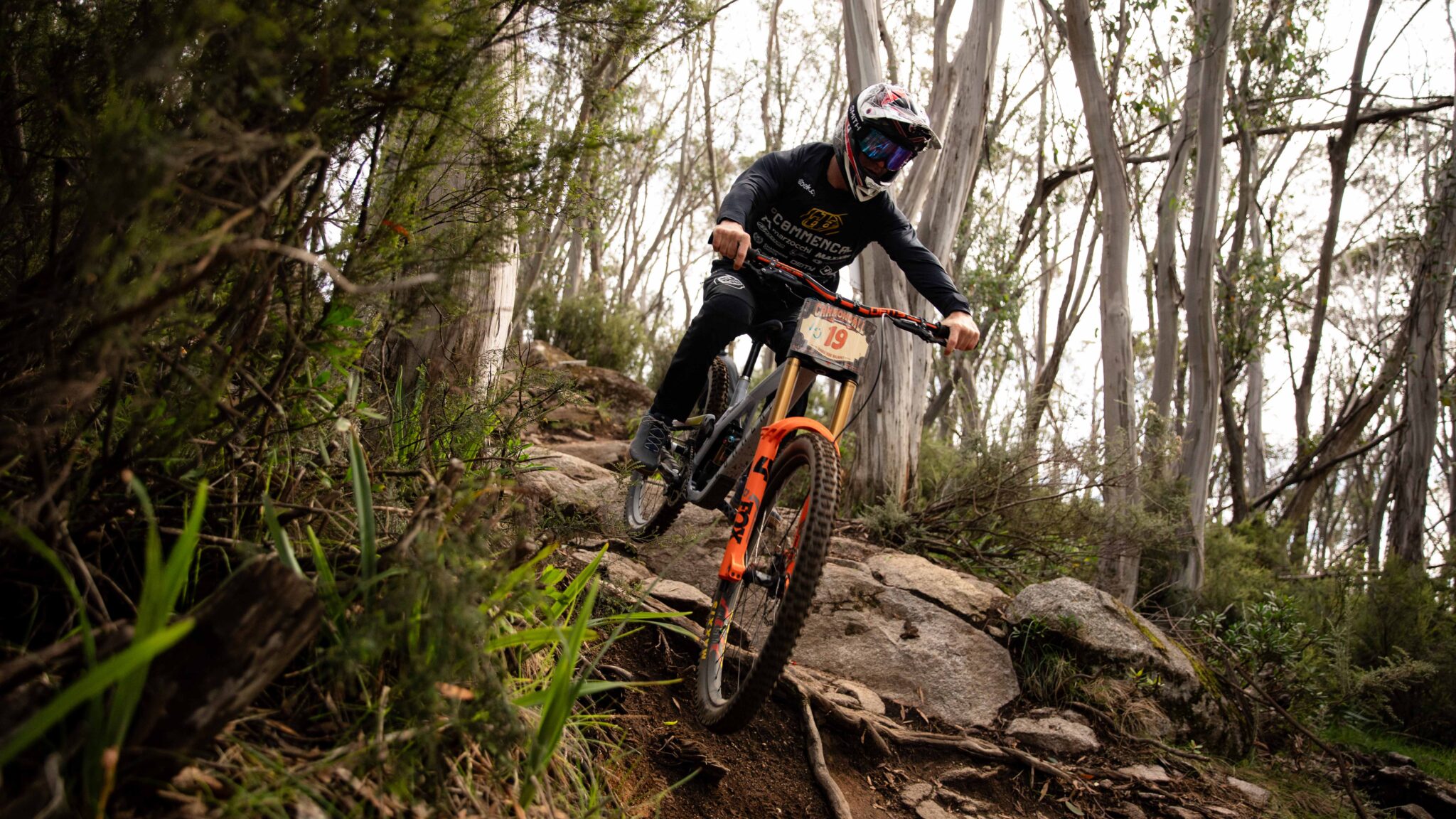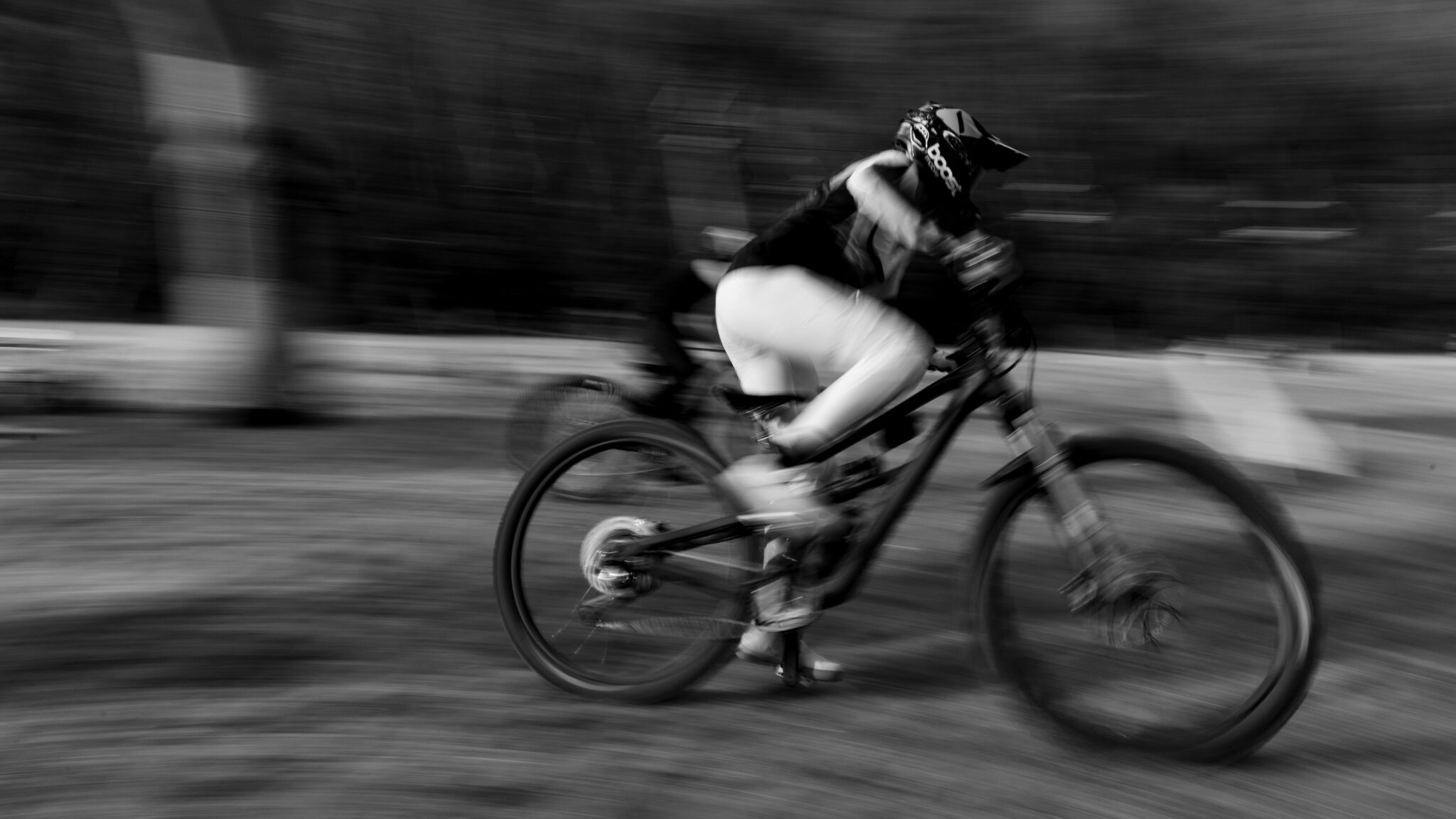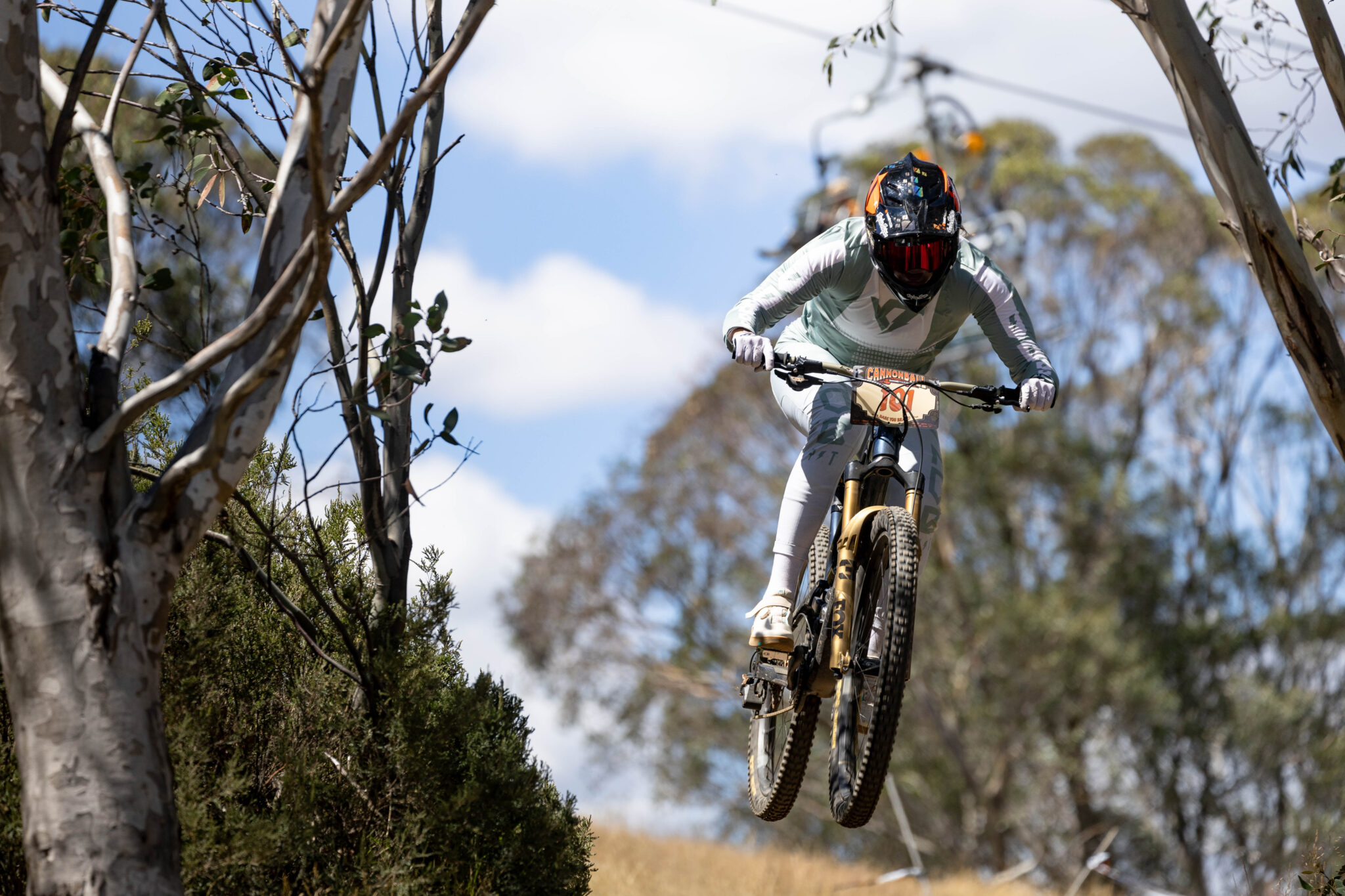New Gnar for Mount Taylor
The Hurt Locker is a new double black trail for Mount Taylor, and a promising case of a truly technical trail being sanctioned by a land manager.
Words: Will Shaw
Photos: Brad Fisher, Chad Bromley
In a recent article (The Modern Trail Landscape) I spoke with experts in the trail building and sanctioning professions regarding trails in Australia. We spoke about existing trails, new trails, and the trails of the future. One of the consistent themes in those interviews was that getting truly technical trails on publicly managed land is no easy feat.
With this in mind, it was exciting to receive an email from Dave Tarling, who’s a Mount Taylor local. Dave, or ‘Div’ as he’s known is the driving force behind a fantastic collaboration between local volunteers and the Department of Environment, Land, Water, and Planning (DELWP) to build and sanction a genuine double black trail at the Mount Taylor Bike Park called ‘The Hurt Locker’.
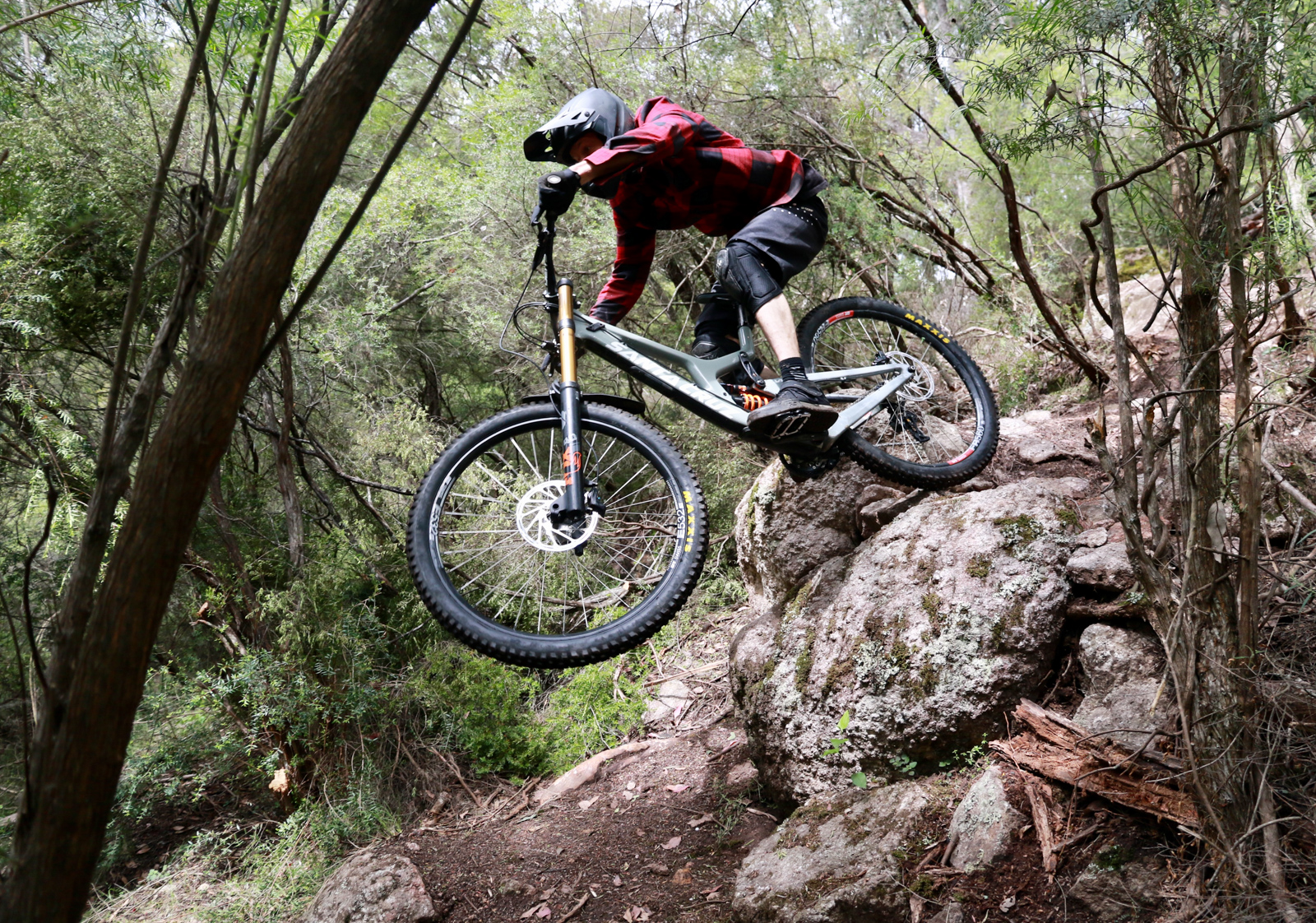
This new trail adds to their already impressive technical trail network that features a national level Downhill track, a great black graded flow line, and another shorter black trail called Loosen Up, which feeds into The Hurt Locker. Mount Taylor isn’t an exclusively gravity focussed Bike Park however, as it also features a fantastic 8.3km XC loop, and several other blue trails that are a hoot on anything from shorter travel machines to Enduro bikes.
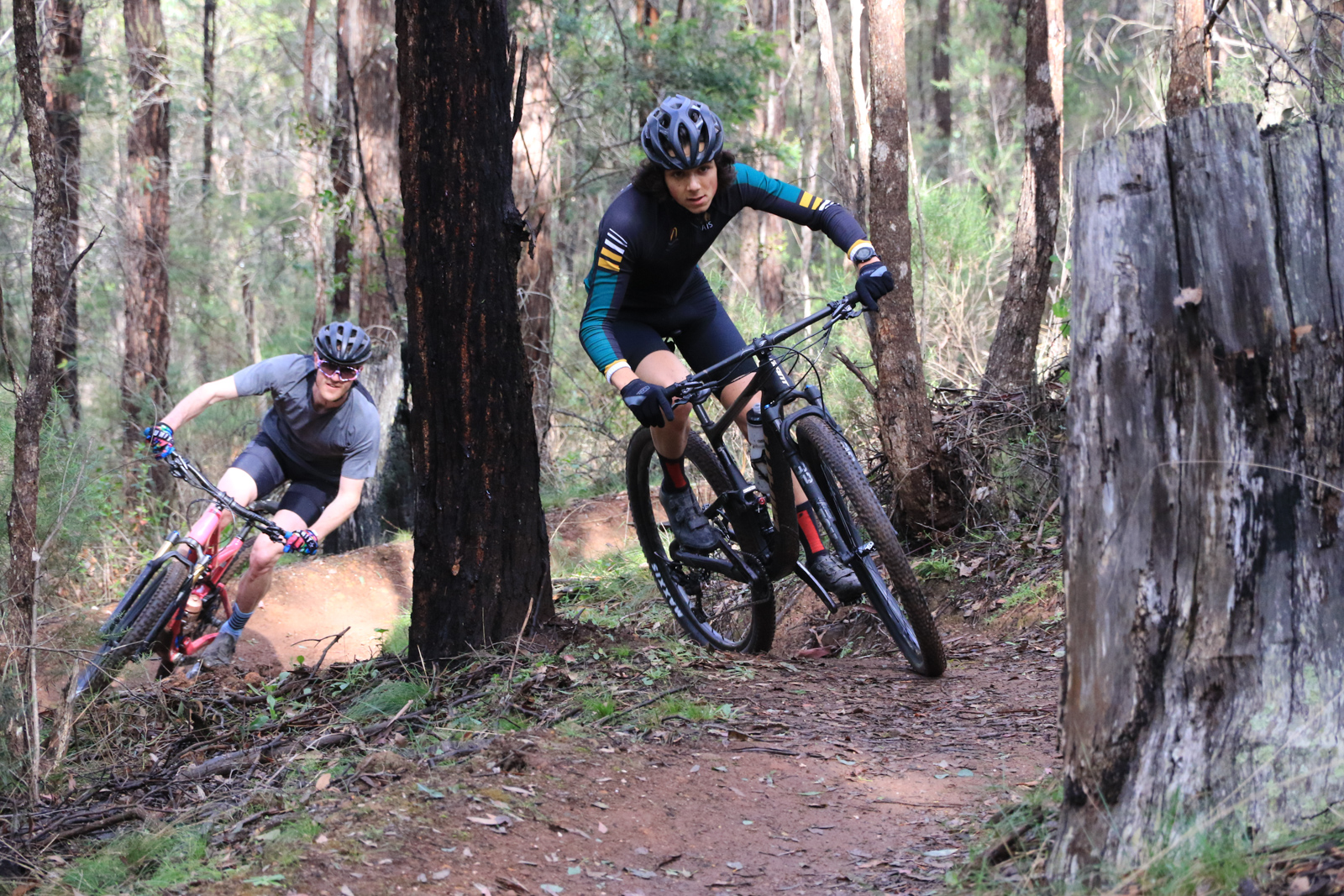
The Hurt Locker is said to be a highly sustainable trail. I didn’t know what that meant, so I asked Brad Fisher. Brad is the District Manager for the DELWP Tambo District in Gippsland and one of the main contacts between DELWP, Div, and the other members of Mountain Biking East Gippsland who were involved in this project.
‘Mount Taylor is a site with highly erodible soil. The great thing about The Hurt Locker is that it’s a line that’s mostly rock. There are a couple areas that may cause some issues, but we’ll keep an eye on that. I’d say the trail is ninety nine percent sustainable, as so much of the trail is on granite it will require very little ongoing maintenance, this has been proven through recent high rainfall events that have led to no erosion on the track occurring.’
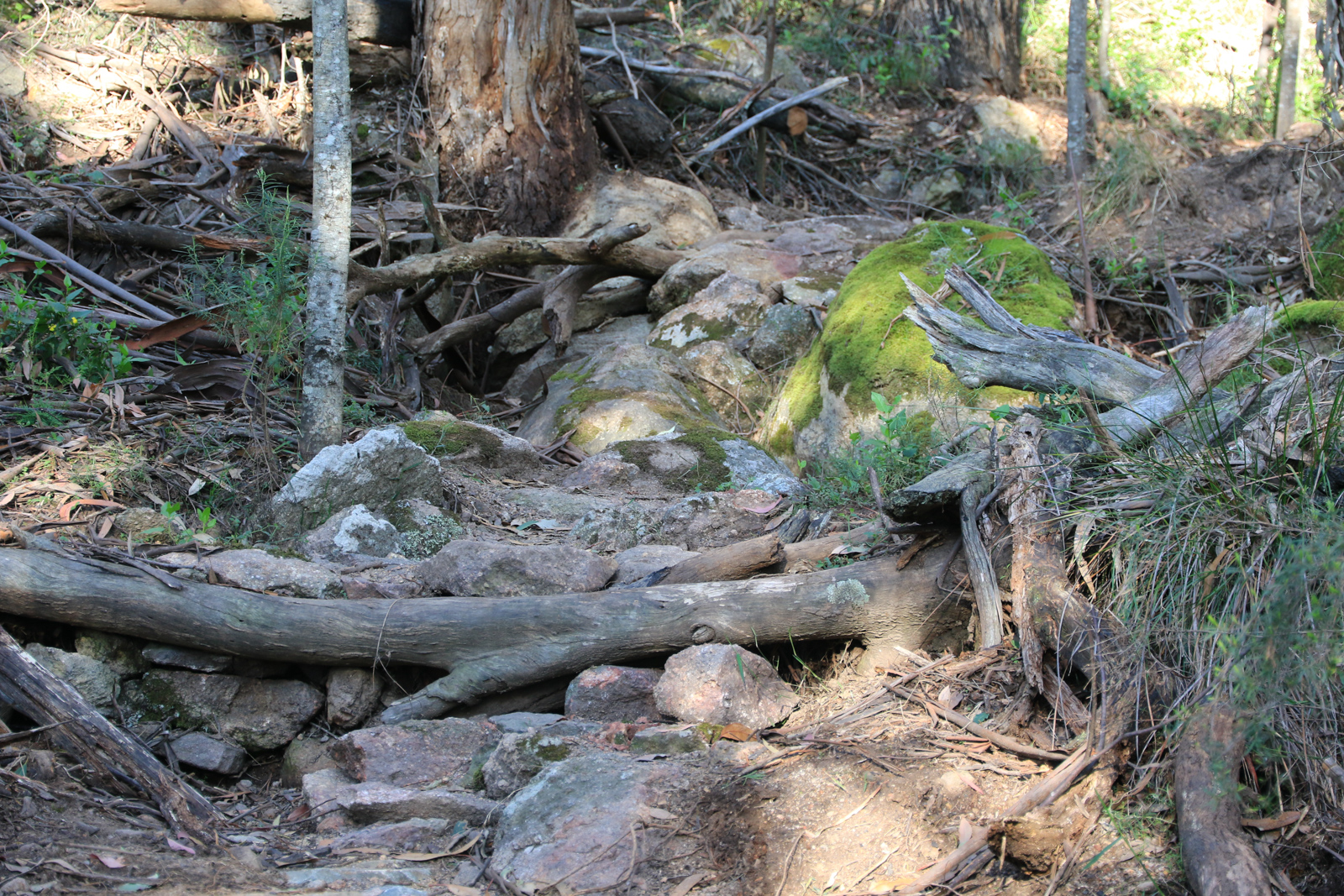
Despite there being demand for more technical trails at Mount Taylor, any new trail on DELWP land must go through a sanctioning process, which Brad outlined.
‘There’s always been a real interest in the potential for black diamond and double black diamond trails at Mount Taylor. In the past there’s been a bit of frustration from riders not having all the opportunities they would like in terms of gnarly tracks, but any new tracks need to be thought through in a planning sense from the lenses of cultural heritage, biodiversity, and long term sustainability. Issues associated with sustainability are a key factor influencing decisions that public land managers need to consider, particularly with more technical, steeper tracks.’
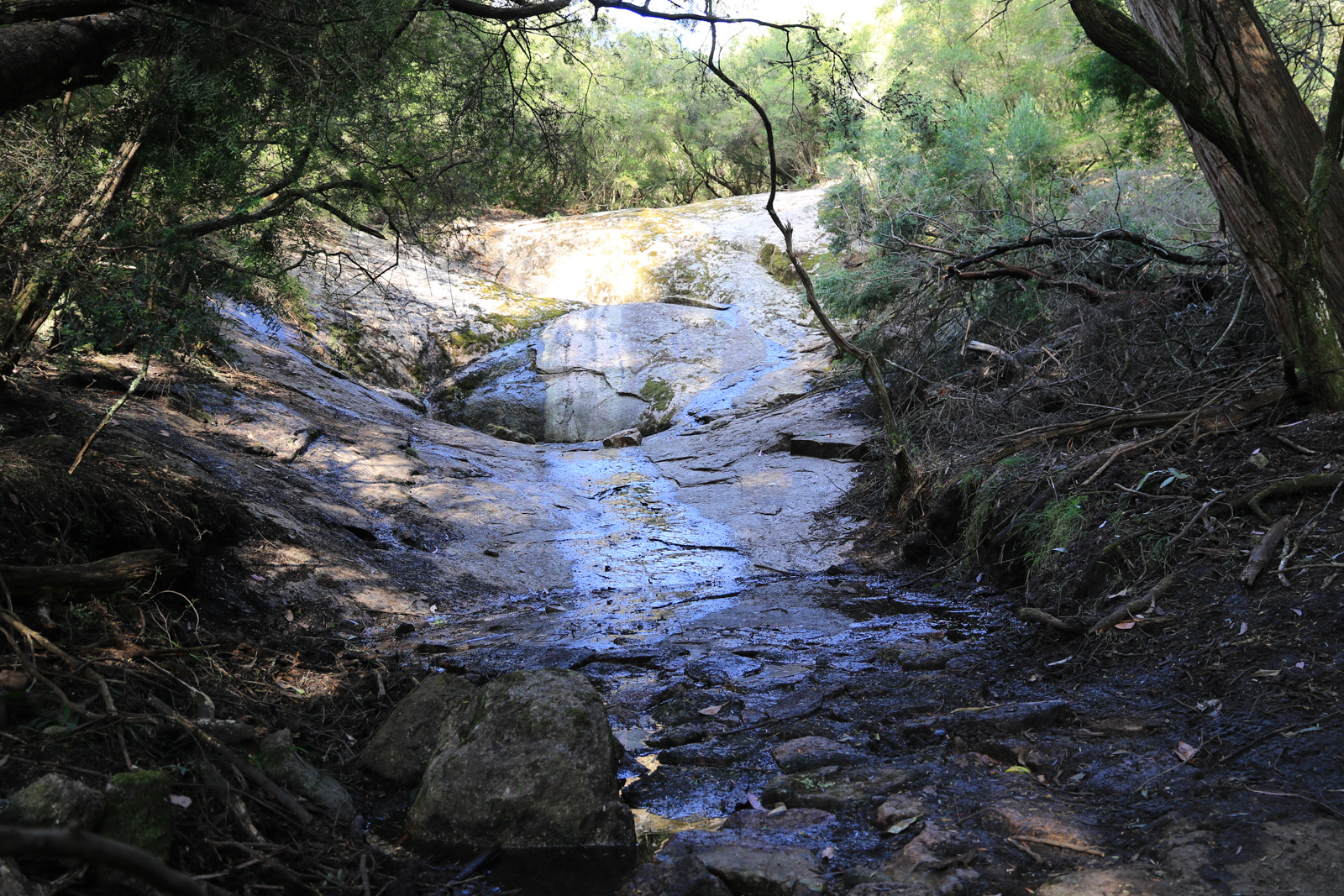
Due to its use of the the granite in the creek bed through which part of the trail runs (which is similar to the iconic Salmon Run in Queenstown), Brad says The Hurt Locker blends in with the natural environment beautifully.
‘It really feels like it’s at one with the landscape, if you were walking on these sections you wouldn’t even know you’re on a mountain bike trail.’
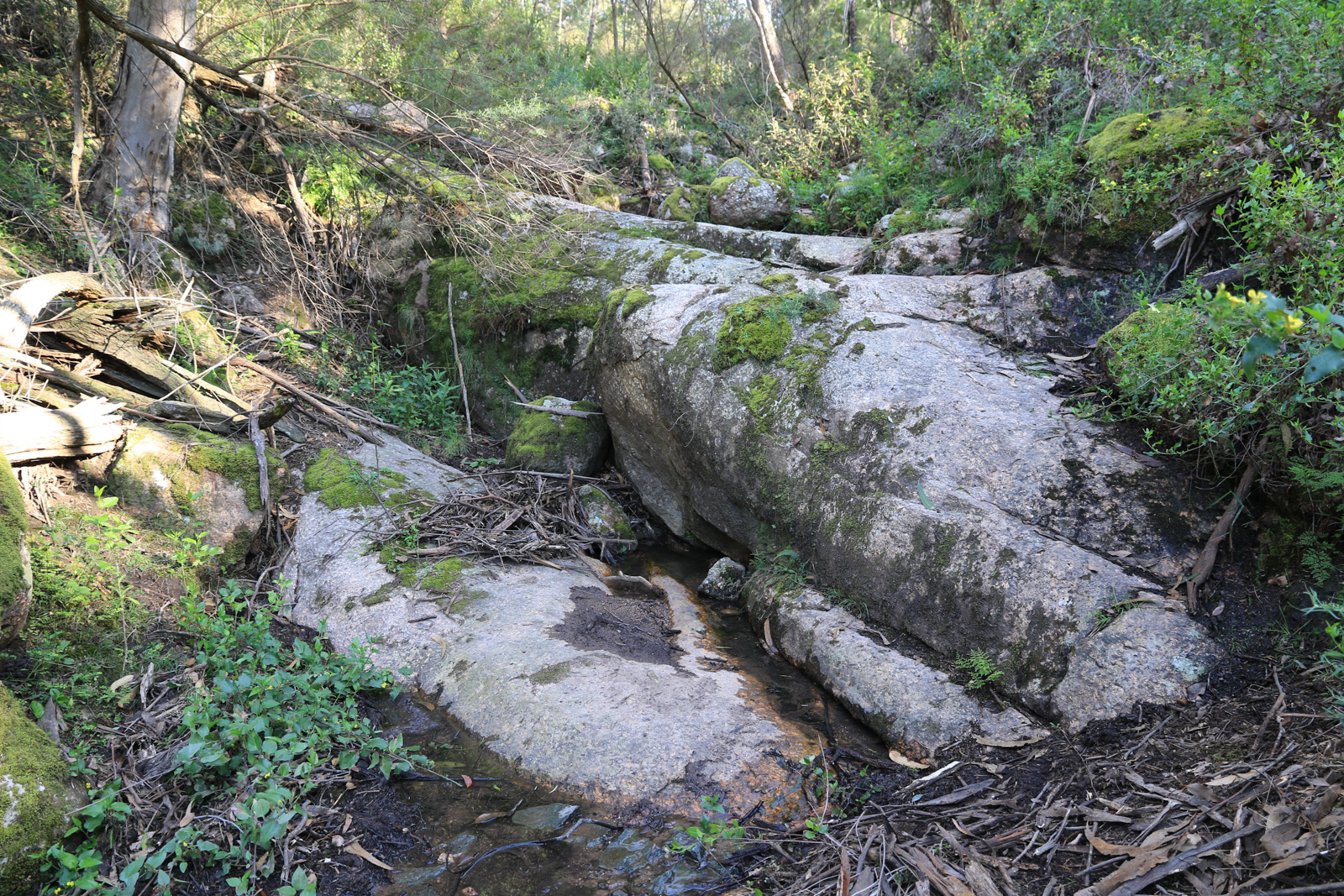
Another element of The Hurt Locker that’s worth mentioning is that it was 100 percent built by volunteers. Brad says Div and other dedicated trail builders deserve plenty of credit in this area.
‘There haven’t been any professional trail builders work on The Hurt Locker. We applied the learnings we’ve had in the past from trails like the XC trail and Flow trail that were professionally finished to ensure high quality construction, particularly in relation to long term sustainability. I do give a lot of credit to Div as it’s really been driven by him, the skills he has as an arborist and outdoors practical person have been well applied, he’s passionate, and he’s engaged. I think the important thing is he wants to do the thing right. Land management is a matter of finding that balance between what land users want and what land managers are able to support.’
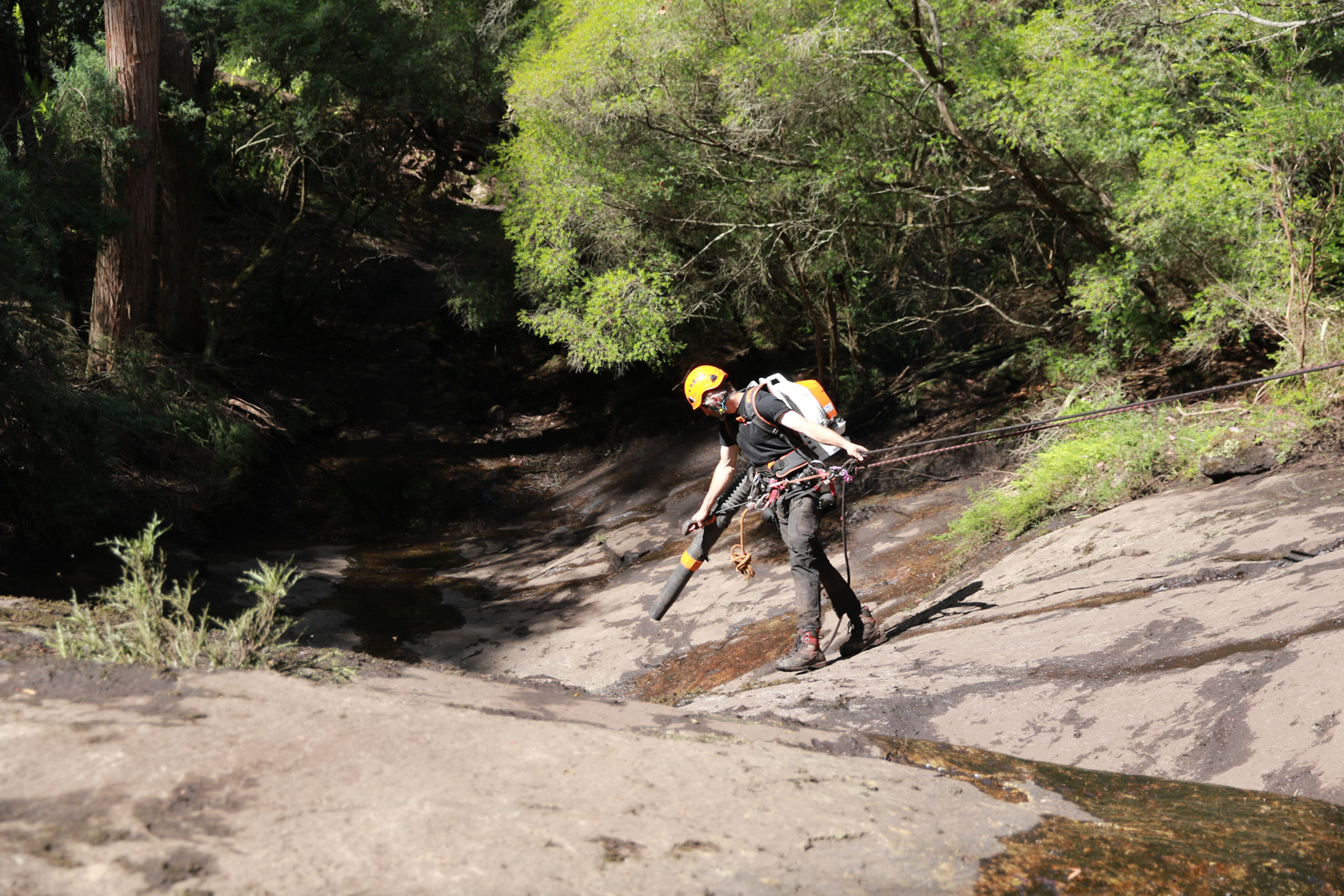
Brad says that having volunteer-built trails and passionate locals like Div can also help to foster an understanding of trail etiquette and stewardship amongst the younger riders.
‘People like Div are teaching younger riders about trail etiquette, respecting the environment, and respecting others. We’re really relying on individuals with influence and clubs like Mountain Biking East Gippsland to build on these concepts. When people respect the environment and land management processes, we are more likely able to support them, it’s about respect and joint ownership. Things like pirate trails shift our energy away from this. We might have to redirect funding or time that would be otherwise allocated into new trails or trail maintenance towards dealing with the issues pirate tracks or poor track usage cause us.’
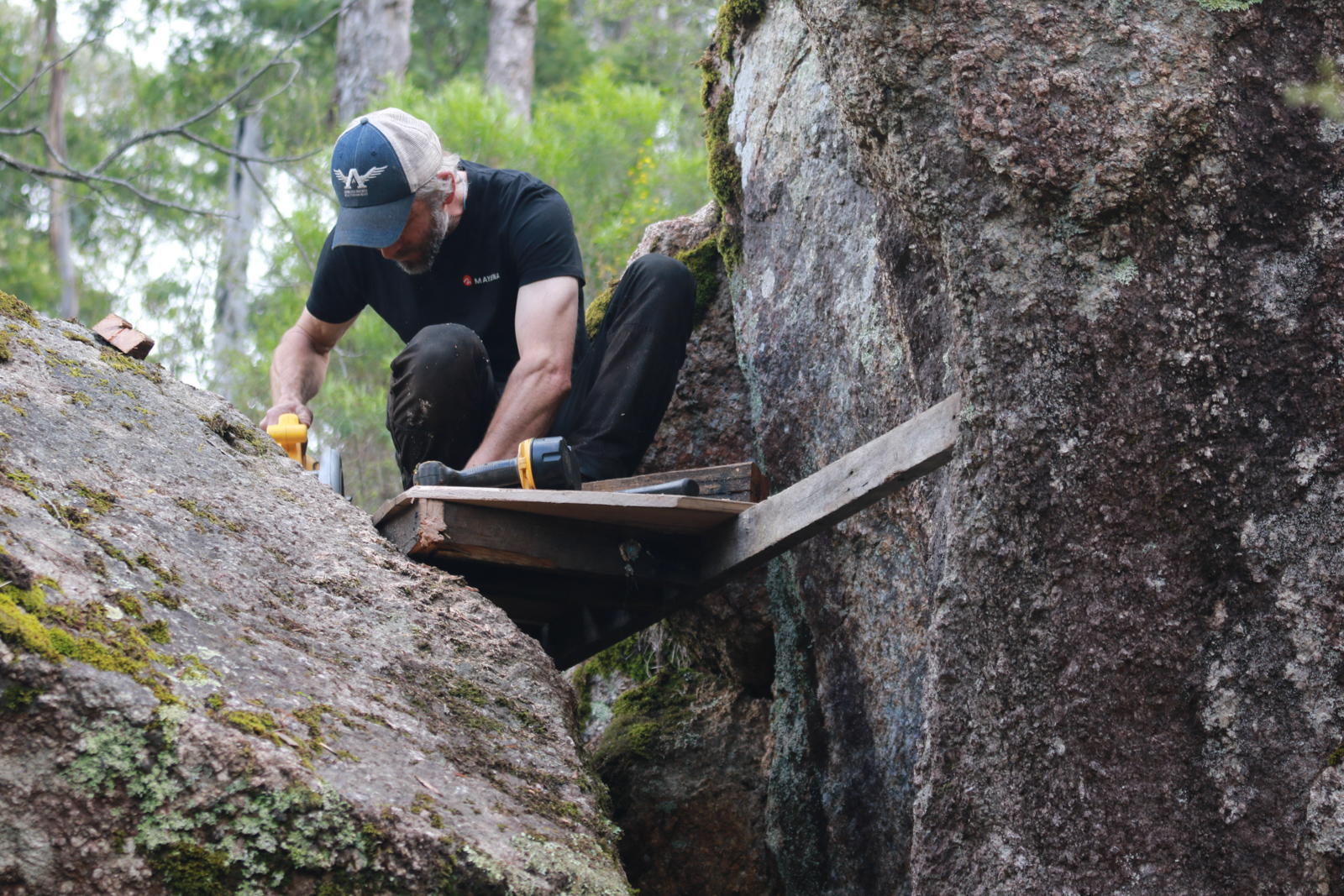
As I’ve mentioned and was reiterated to me by Brad, The Hurt Locker wouldn’t have come to fruition without the tireless work of Dave ‘Div’ Tarling. Div was also the person who contacted us to let us know about The Hurt Locker, and his enthusiasm for both mountain biking and growing the sport in his local community is infectious. I asked Div about where the inspiration for building The Hurt Locker came from, and he said it’s been an interesting journey to get to where they are now!
‘It goes back to about a year and a half ago when the seed was planted. I got the sense that it was never going to happen when we first approached DELWP for a few reasons. About six months ago we approached them again with some changes to the trail design and got the nod that we could proceed, but the trail wouldn’t be sanctioned. After we’d begun building, we started thinking that perhaps it could be sanctioned due to how little this trail impacts the environment. The sanctioning wasn’t the priority though, the quality of build was. When Brad went through the trail, he was impressed by the trail quality and minimal environmental impact. The outcome is more than what we expected in that now the trail is sanctioned!’
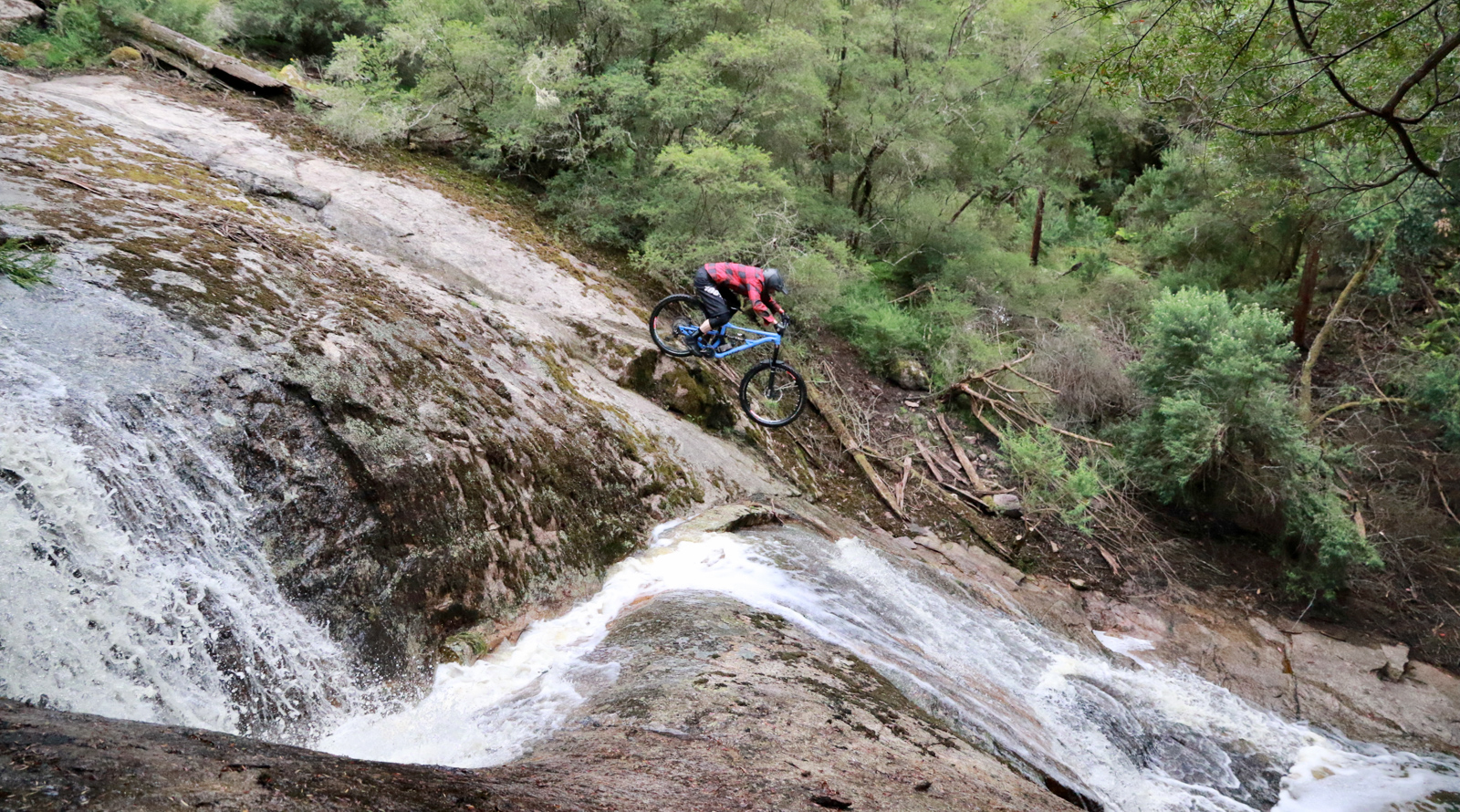
The finished product is a two-minute thirty run that’s a legitimate double black descent. Div says the rock filled descent is rideable on both an Enduro and Downhill bike, with pros and cons to either choice.
‘When you walk around Mount Taylor you see plenty of Granite rock. The idea was to utilise the rock that’s there and make The Hurt Locker as difficult as possible while keeping things as natural as possible. Other than adding some timber bridges and a skinny where necessary the whole trail is basically rock with a bit of flow at the very end. It’s a two minute thirty run that hits the spot for a mental and physical challenge. I’ve ridden it on my Enduro and Downhill Bike, and there were benefits to both choices.’
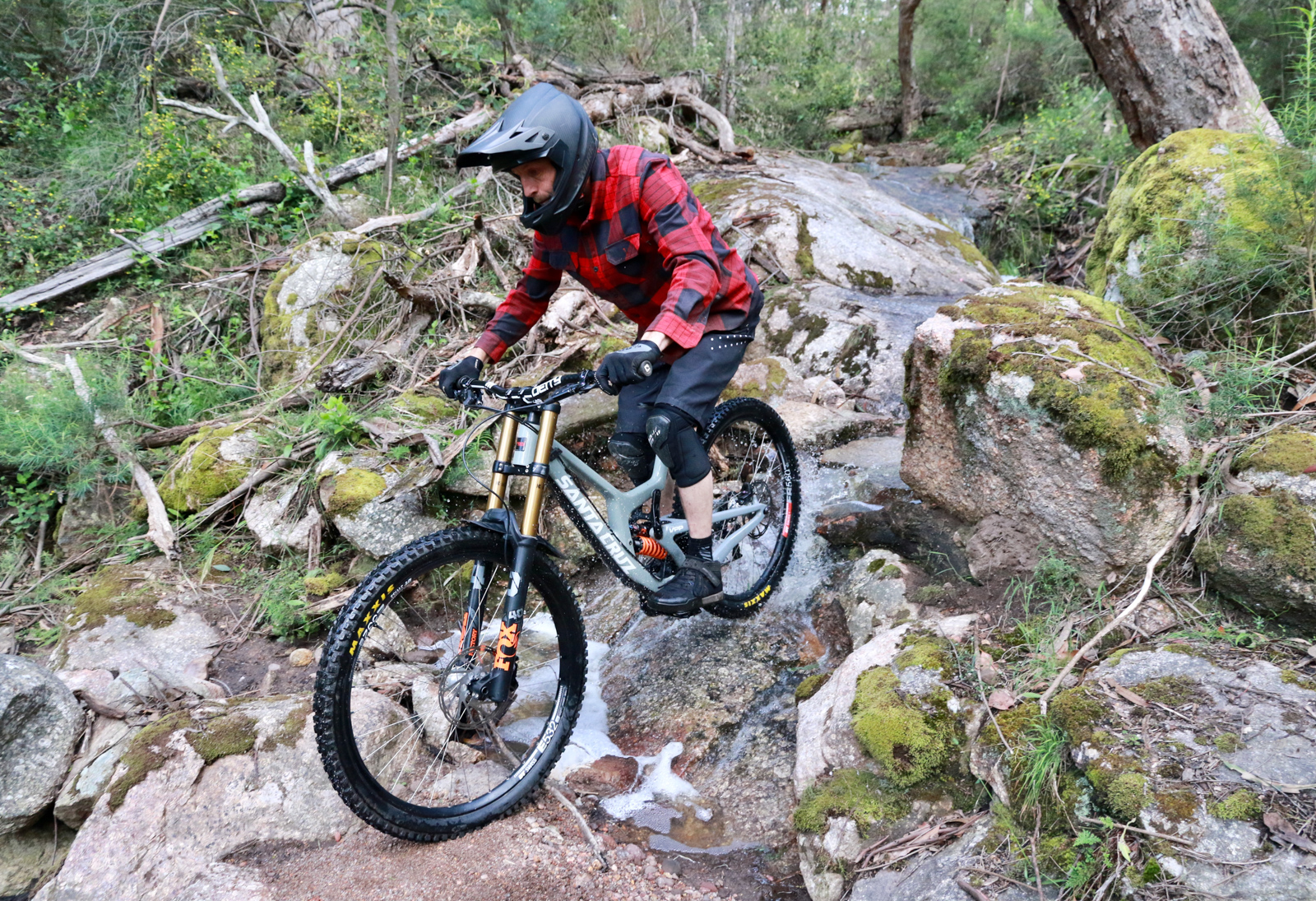
When asked about what’s next, Div says there’s plenty of opportunities for more sustainable technical trails at Mount Taylor.
‘Absolutely there’s more scope for technical trails at Mount Taylor. If we get the go ahead to access some of the slabs in the area where The Hurt Locker is there’s some easy to construct trails. The reason why this works so well is because we’ve been able to do it on sustainable rock. The Hurt Locker is filled with chunky rock and slabs, but there is a certain speed you need to maintain to hit the transitions, which adds to the technicality. It’s not a slow technical run, it’s designed to have a bit of speed. Most of it is in a creek bed that only runs once in a blue moon.’
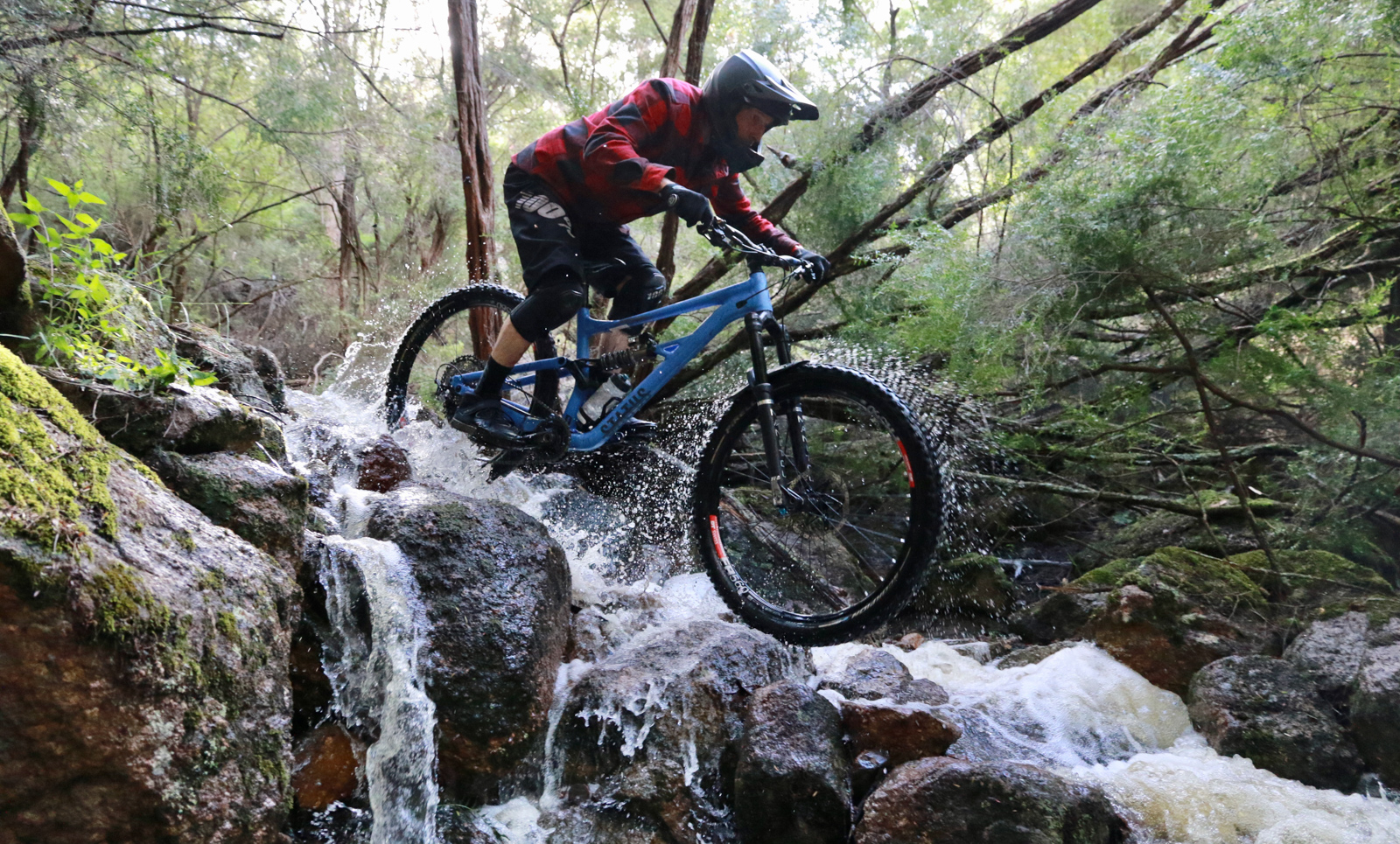
If you’re this far in and you’re intrigued about what a top to bottom run on The Hurt Locker looks like, check out @div_tarling on Instagram. Long story short, it looks properly janky and gnarly almost top to bottom. When Div and the team finished building the trail, in true Murphy’s Law fashion there was enough rain to get the creek flowing. Div says he couldn’t have been happier with the outcome.
‘One thing that’s kind of cool is that we had a substantial amount of rain down here once we’d finished building and the water started flowing. I went up there to have a look afterwards and it had only washed away the smaller pebbles, so ongoing maintenance after these events should be simple. In my eyes the trail just went through its first major sustainability test and passed with flying colours.’
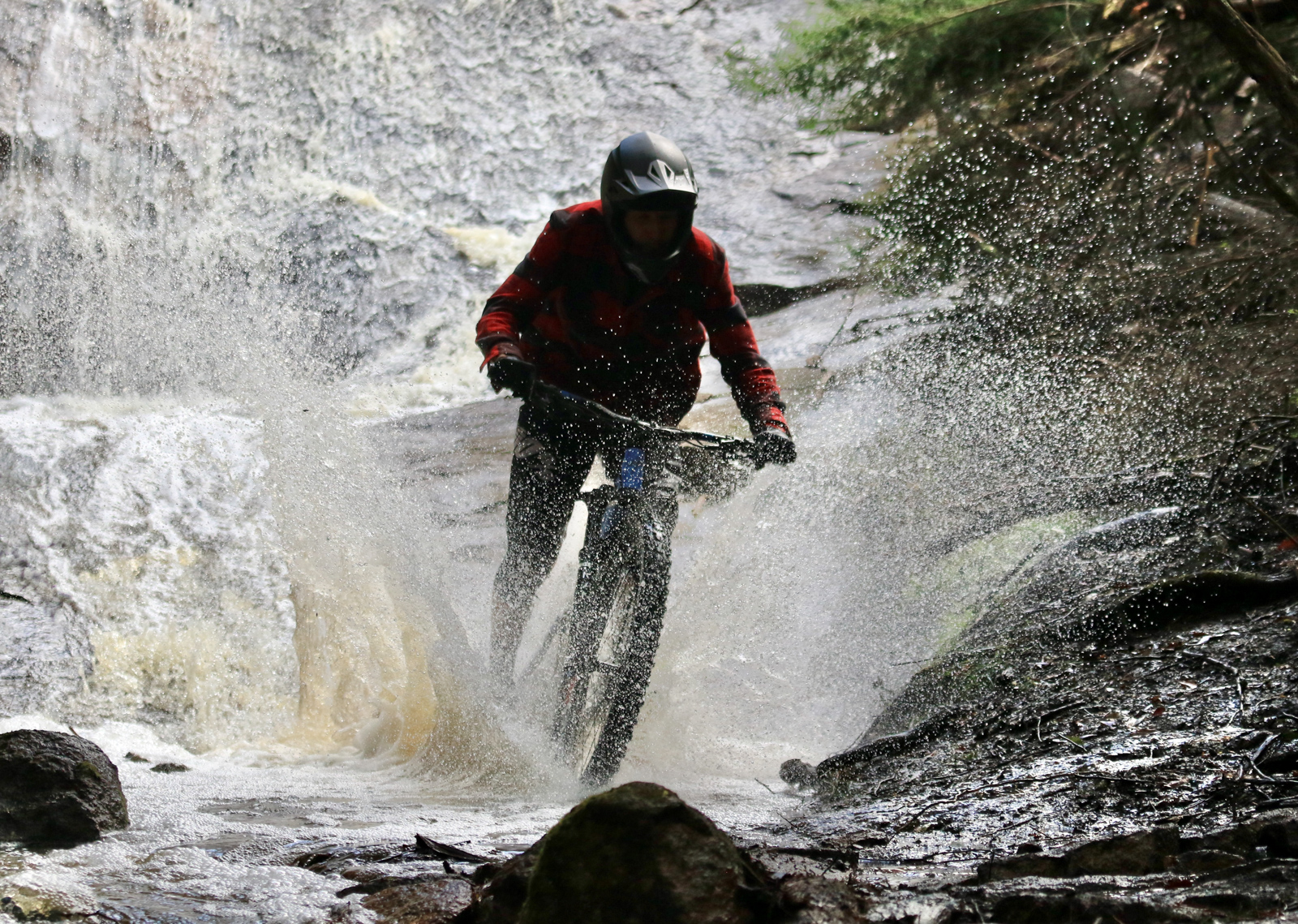
When it comes to trail maintenance, Dave agrees with Brad that the younger generation are getting involved and taking ownership.
‘The trail has definitely detracted from illegal trail building by giving riders of all ages something to challenge themselves on. When there is a trail maintenance day quite often there’ll be a bunch of young riders. The more kids that can get in there and maintain the trails the better as it gives them a bit of ownership and pride in the trails.’
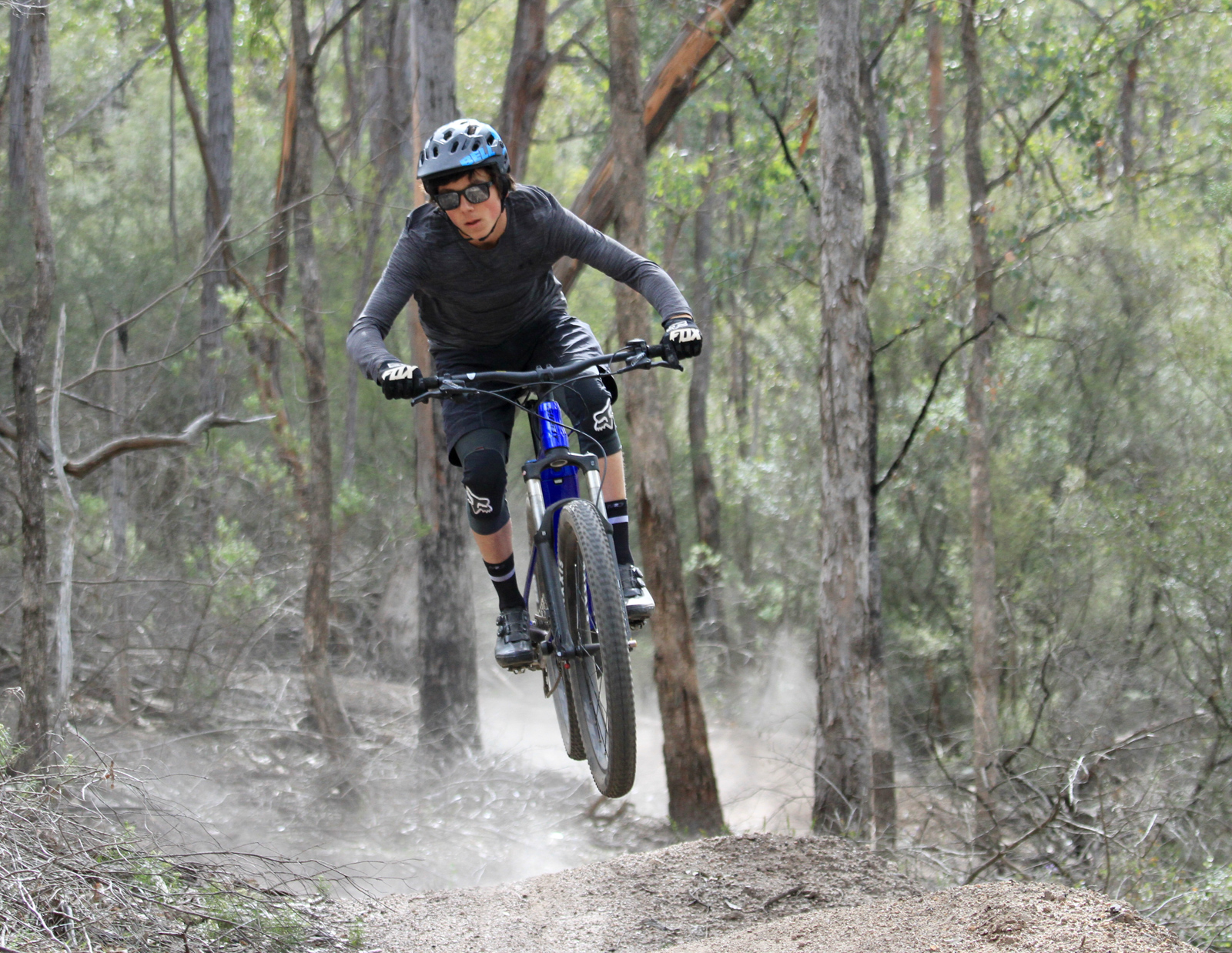
If you look at Trailforks, you’ll notice that the downhill trail at Mount Taylor is graded as double black, the same classification that The Hurt Locker will fall under. Div says that despite the classifications being the same, make no mistake that The Hurt Locker is a much gnarlier trail.
‘The Hurt Locker is a serious step up from the Downhill track, with minimal room for error. The downhill track is closer to a black diamond in my opinion. The Hurt Locker is a double black diamond with a couple of optional pro lines in there. If you can’t ride the first staircase feature, you’re not going to have a good time on the rest of the trail, so it’s a good way for riders to assess their skills and walk away if necessary. Either way I’d suggest walking the trail before you attempt to ride it.’
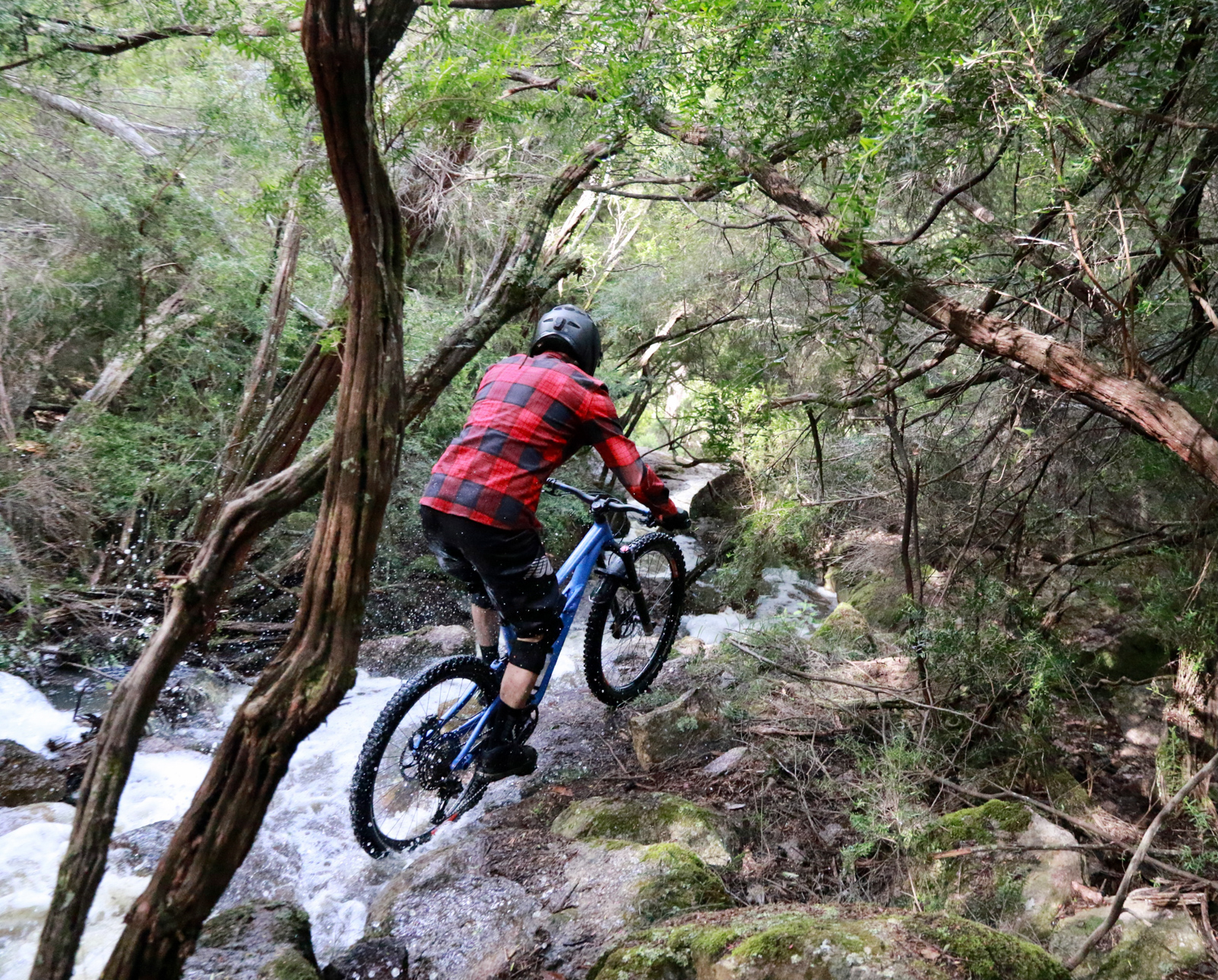
More broadly, the East Gippsland region is going through huge growth in terms of the trails on offer and participation in mountain biking. Jacinta Nelsson is the President of Mountain Biking East Gippsland, and she says the sanctioning of The Hurt Locker has been an interesting process as the club hasn’t been as involved as they normally would be.
‘How The Hurt Locker happened was basically down to Div and other volunteers. DELWP eventually agreed that they could build it as long as the volunteers who built the trail agreed to perform the ongoing maintenance. The club can’t put any resources towards a trail like this due to our limited resources, and the limited number of people who’re going to be able to ride it, so it really just comes down to Div and a handful of other volunteers.’

Jacinta agrees with Div and Brad that the beginning of the trail should give riders an indication if they’ve got the skills required to ride it and hopes this will limit the risk to riders without the appropriate skills.
‘The beginning of the trail is literally in a creek bed, with big boulders and rocks you need to drop and roll over. If you can’t navigate this first section, it’s clear it’s not the trail for you.’
After more trails articles?
New Trails for kunanyi/Mount Wellington
New Mountain Bike Trails in Queensland’s Bunya Mountains
Jacinta says despite the limited number of riders who’ll be able to tackle The Hurt Locker, the trail has discouraged the building of illegal trails. This has the dual positive effects of allowing club and DELWP resources to be committed to more productive endeavours, and providing a trail to maintain and keep in good condition for high level riders in the local area.
‘The Hurt Locker has definitely discouraged illegal trail building, which is great as we can put our resources towards maintaining our actual trails and focussing on what’s next.’
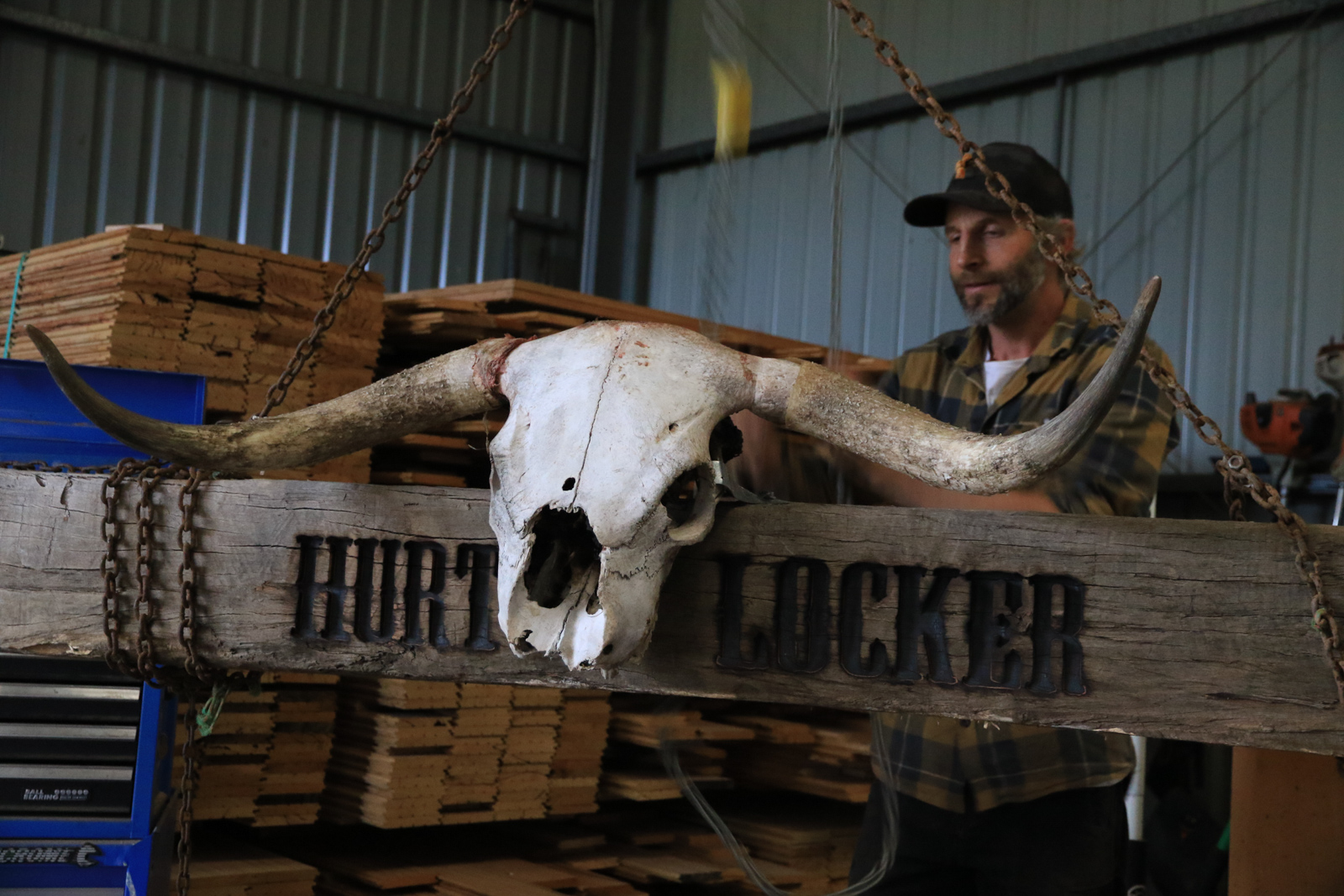
What’s next sounds exciting, with plans for a skills area at the base of the trails that’s shovel ready pending funding.
‘The next focus pending funding is a skills park, jump line, and carpark at the base of the network. The current base area isn’t suitable for the increased usage numbers Mount Taylor is seeing daily, particularly on weekends. There’s been an audit and now there’s been a design for the skills park, which is significant, but we’ll obviously require funding to get the project completed. This is something we’re working on.’
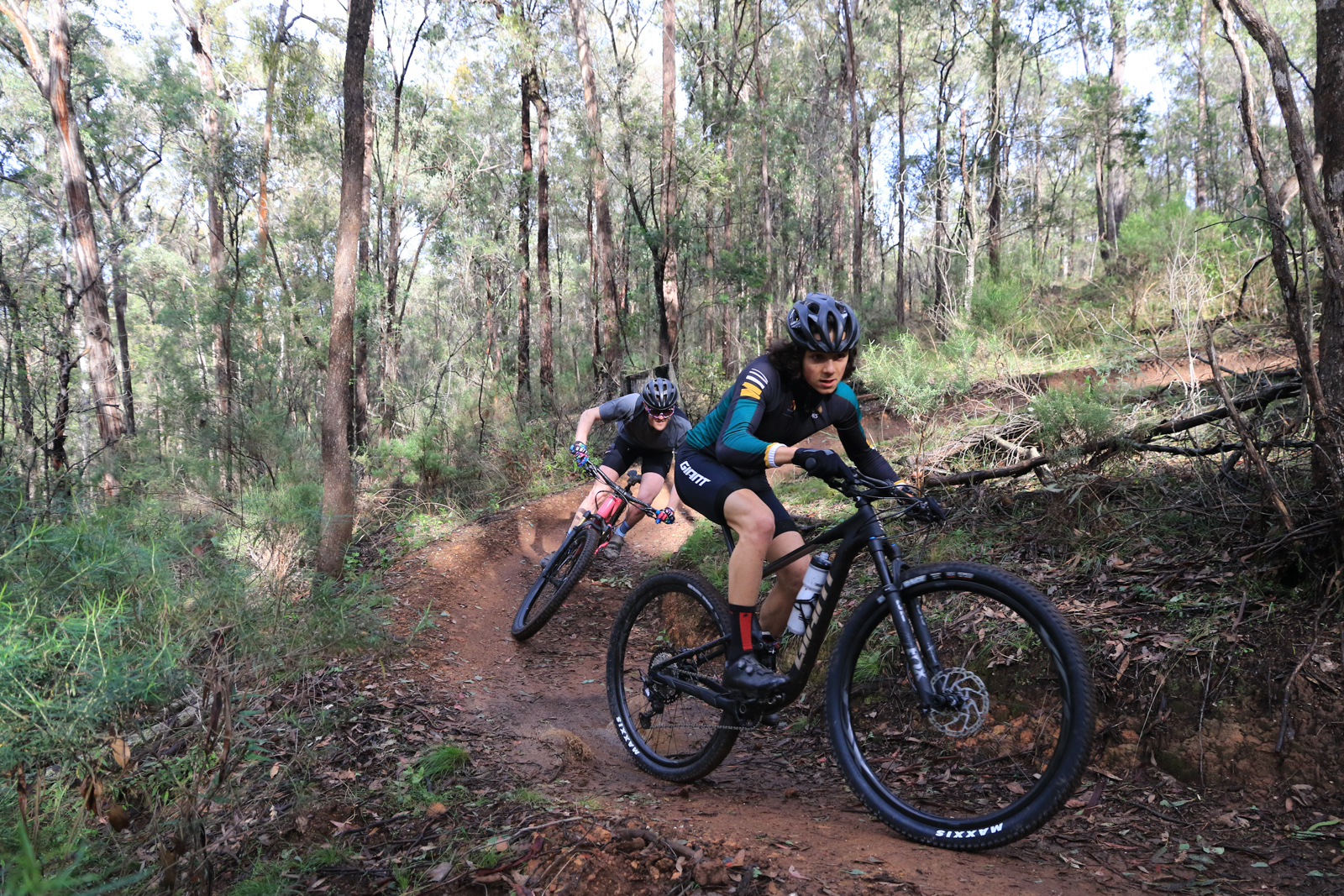
Brad agrees that there’s big things on the horizon for Mount Taylor.
‘In terms of what’s happening at Mount Taylor there’s a skills area project that’s shovel ready dependent on funding. Maintaining what we already have is also a big focus, for example working on the downhill and flow tracks to improve sustainability. We’re also working on a 7km track from the top of Mount Taylor that’ll be a beginner to intermediate flow track. With a quieter fire season predicted we plan to use some of our summer firefighters in continuing to build this track. We also know where there are other sustainable pockets for building in the future, so that’s something to look forward to.’

So does The Hurt Locker pave the way for more collaborations between DEWLP, mountain bike clubs, and volunteers in future to sanction truly gnarly trails? Brad says an example like this is certainly helpful. He says it assists with land management knowledge building, and the sharing of ideas with colleagues.
‘I think other areas have the potential to get gnarlier trails sanctioned, particularly if they’ve got the terrain available. We’ve certainly had other forest districts (there’s 16 in Victoria) contact us to ask about how we’ve gone about the process, and what makes it work here. You need to be open to suggestions, open to listening to community, and then considering how it fits within our planning framework. This can add to and assist with decision making, the number of decisions that need considering won’t always provide the outcome sought. The Hurt Locker is a good example what individuals, groups, and land managers can achieve together, it presents a good framework for others to consider.’
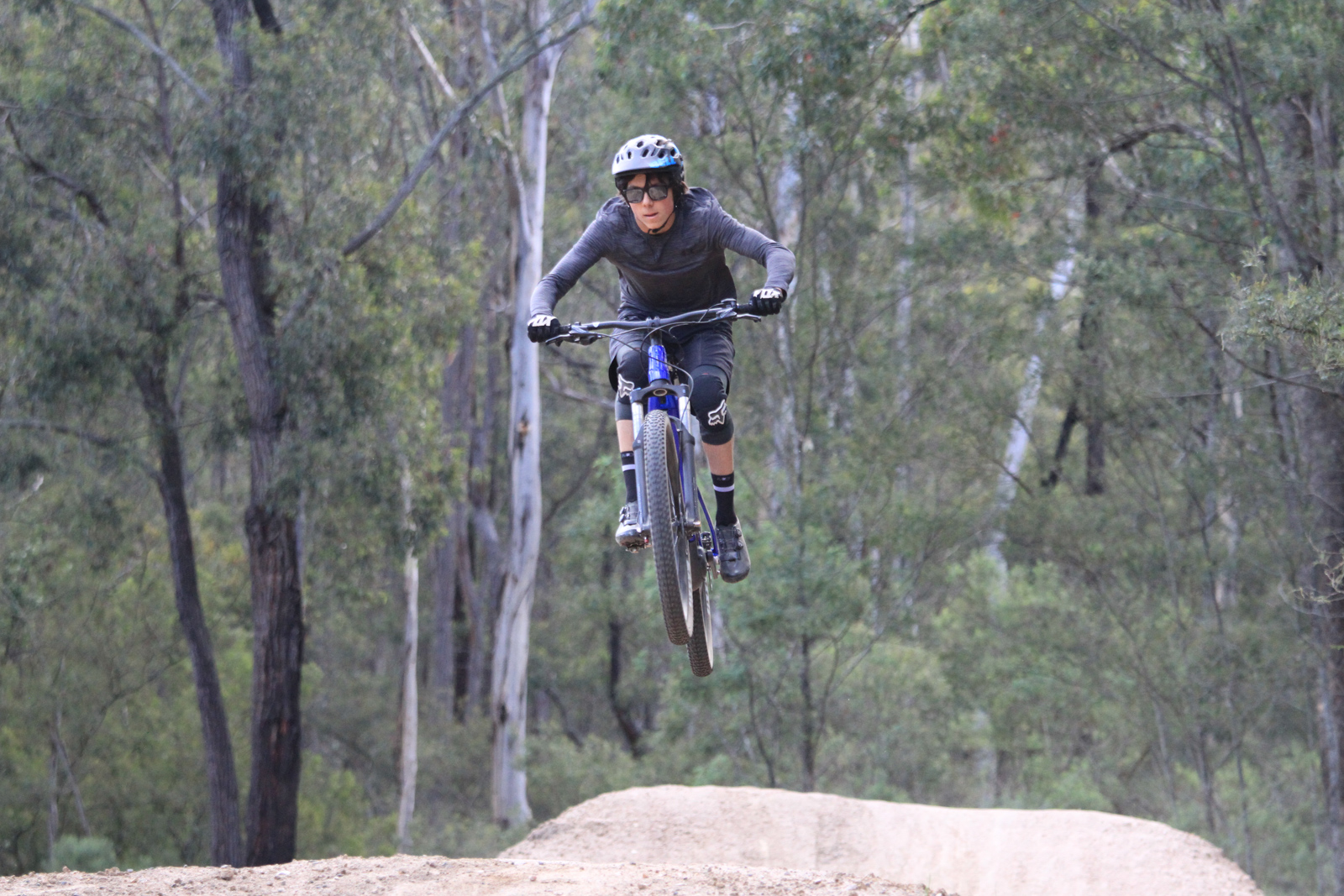
Div thinks that Mount Taylor has the potential to lead the way when it comes to technical trails in East Gippsland.
‘Personally, I feel that Mount Taylor has so much to offer with the rock slabs and the difficult terrain, and I think it could be an area with plenty of double black and black lines to capitalise on where you have the sustainable terrain and rock slabs to make it a bit more difficult. The kids these days are watching gnarly riding on YouTube and their ambitions aren’t riding green and blue trails, they want to tackle the gnar themselves. If you don’t follow that progression, I think across Australia we’re going to have some outdated facilities very soon, which will create further problems with pirate trails.’
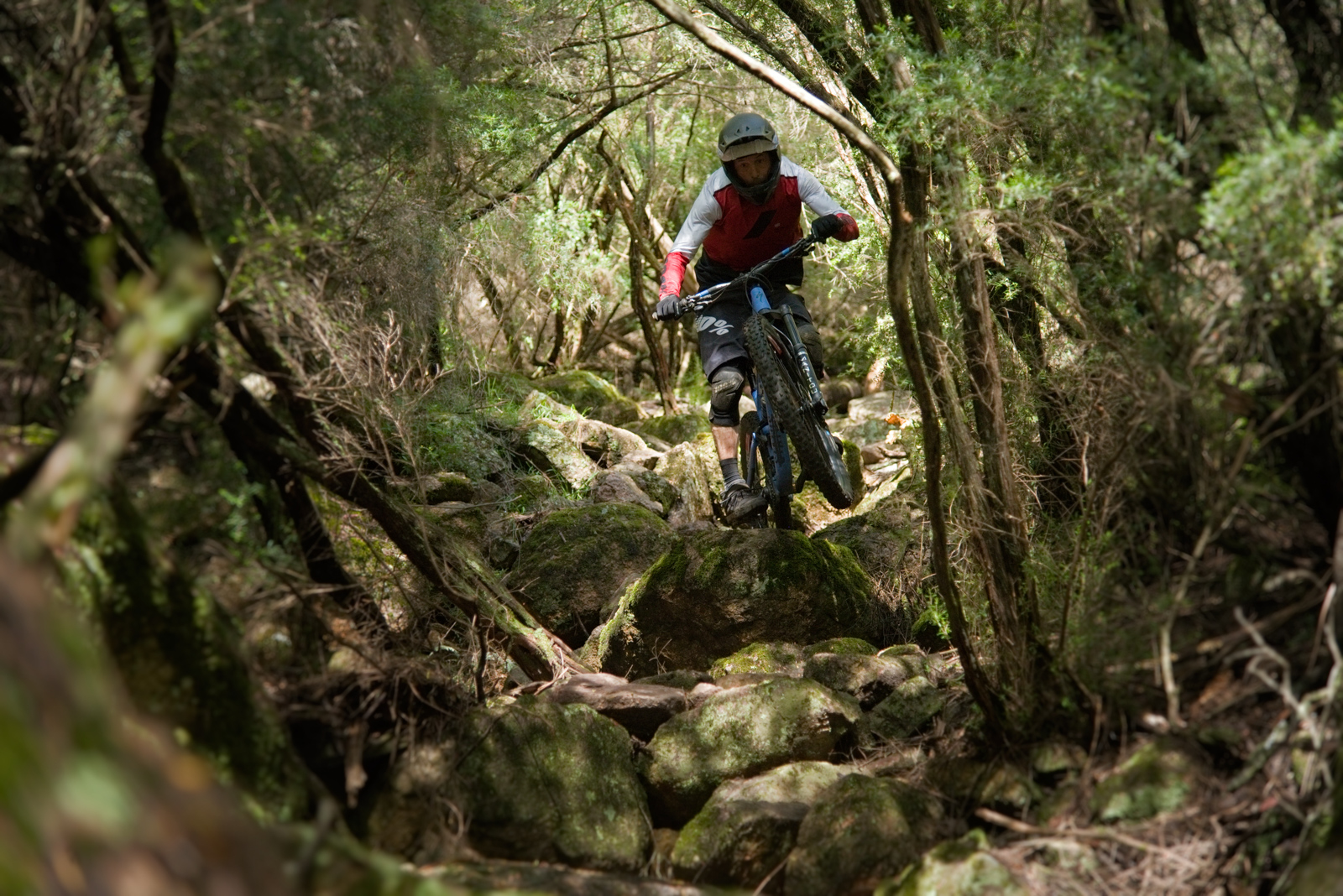
Div also wanted to acknowledge the support from local riders and businesses in making The Hurt Locker a reality.
‘Thank you to the small posse of riders, friends, and businesses that contributed their time and materials to help make The Hurt Locker what it is – something gnarly, unique, and epic! The total actual cost of this build would be less than $300 in materials I had to buy myself. I’d also like to thank my wife and kids who put up with me going missing for days on end and sat there listening to me as I told them what was happening with the build of The Hurt Locker.’
- Auswest Timbers Bairnsdale – Donated Bridge Decking
- Oz Components – Use of CNC machine and engraving of signs
- Clifton Mobile Homes – Donated steel and assisted in building the bridges
- Bairnsdale Bikes – Donated Dakine trail builders backpack and Dakine gear bag
- East Gippsland Tree Services – Supplied all material for signs
- Posse of riders – Helped shift rock, cut trail, and build bridges
- Brad Fisher and Andrew Sharpe – For having the strength and belief to allow this trail to be built
- MTBEG – To the committee for having the strength to get a club up and going over the last two years
It’s great to hear positive stories of land managers and volunteers all working collaboratively to achieve a great outcome. I’m looking forward to my next ride at Mount Taylor to ride The Hurt Locker (or perhaps I’m not having seen how gnarly it is!), and the other trails in this fantastic network. Hopefully this successful collaboration between hardworking volunteers like Div and proactive land managers like Brad from DEWLP is something that can be replicated in other areas of Victoria in the future!

